Blockbuster vs. Netflix
If the 2010s taught us anything, it’s that there’s no better example of a business that pivoted to meet customer needs and preferences than Netflix. Likewise, there’s no better example of a business that failed to pivot, innovate and meet modern market demands than Netflix’s original competitor: Blockbuster.
As a brick-and-mortar DVD rental business, customers had to drive to Blockbuster to get the latest new releases on video or DVD. In its early days in the aughts, Netflix delivered movies directly to customer’s doorsteps via the mail. Initially, that was an innovative model — until cable companies started offering movies on-demand. This left Netflix with a dilemma: why would customers order from Netflix and wait a few days when they could stream any movie anytime?
How both companies responded to the shift towards on-demand and online content illustrates the difference between traditional and agile business models, and shows why business leaders must constantly engage with customers to drive innovation and stay relevant.

The streaming revolution
Leaders at Netflix recognized the value of design thinking for what it is: a method to consistently hone their business offerings. Teams were encouraged to look for new opportunities to delight customers, drive engagement and generate new revenue. The approach? Empathize with customers,unearth pain points and find their unaddressed needs.
Beginning in 2011, Netflix began producing their own original movies and streaming series. But they didn’t just stop at offering new shows: they dropped every episode of each season on the first day it was launched. Original and provocative programming like Orange Is The New Black, House of Cards and Bojack Horseman helped Netflix capitalize on the binge-watching phenomena, even spawning the now ubiquitous catchphrase “Netflix and chill”. With the watch-in-one-sitting binge option catching on like wildfire, shows were devoured by audiences. Eventually, even bigger streaming phenomena, like Stranger Things and Black Mirror, dominated the cultural conversation whenever a new season dropped, leaving everyone talking about one thing: Netflix.
Need to outpace the competition and shift your business model? Learn the basics of design thinking with our free eBook: Design Thinking 101
Continuing to innovate
In 2016, Netflix adapted to the market again, rebuilding their main landing page to capture user’s attention the moment they logged in. Instead of offering still images or series posters, they added auto-play trailers that launched on mouse hover.
Seeing more opportunities to give users what they didn’t know they wanted, Netflix leveraged artificial intelligence and predictive analytics to create a unique experience for each viewer based on their own viewing habits. The “Because you watched” feature not only transformed the customer experience on Netflix — it transformed expectations for every other entertainment company scrambling to enter the streaming game.
Netflix discovered all of these innovations by using design thinking to empathize again and again with their customers. Meanwhile, Blockbuster stuck to their traditional brick-and-mortar model, making it harder for customers to get what they wanted, when they wanted it. Netflix knew their survival depended on knowing exactly what each and every customer wanted to experience when using their service, and consistently working to meet customers where they were at. By identifying customer needs and adapting, Netflix evolved; whereas Blockbuster, and DVD rentals in general, failed to compete and went extinct.
An industry changed
The next time you’re tempted to think your business is fine and just sit back and rely on the same old strategies to deliver success, remember this story. The last Blockbuster closed in 2019, and ironically, Netflix eventually bought the IP for the brand and made a streaming comedy about the failed business.
In the 2020s, more and more people are ditching cable in favor of Netflix and the various other services the streaming wars inspired. Nowadays, there’s nothing worse than sitting in front of the TV waiting for good content to come on. So, remember, “change happens pretty fast, if you don’t stop and look around once in a while, you could miss it.”
Learn how to evolve with the market, change your organization's DNA and gain a new perspective with customer empathy.
Get started with the foundations of human-centered design with ExperienceInnovation™ | Aware .
Trending This Week
Sign up for our newsletter:, popular posts, how netflix used design thinking to reinvent itself, over and over, 5 icebreakers to ignite your design thinking session, 8 stats that prove design thinking pays off, design thinking in action: building a low-cost incubator, new year, new me: the science behind new year's resolutions, what’s the difference between agile and design thinking, the most important skill for the future of work design thinking., kfc’s menu innovations, seven dimensions of agile transformation.

- Onsite training
3,000,000+ delegates
15,000+ clients
1,000+ locations
- KnowledgePass
- Log a ticket
01344203999 Available 24/7
10 Successful Design Thinking Case Study
Dive into the realm of Successful Design Thinking Case Studies to explore the power of this innovative problem-solving approach. Begin by understanding What is Design Thinking? and then embark on a journey through real-world success stories. Discover valuable lessons learned from these case studies and gain insights into how Design Thinking can transform your approach.

Exclusive 40% OFF
Training Outcomes Within Your Budget!
We ensure quality, budget-alignment, and timely delivery by our expert instructors.
Share this Resource
- Leadership Skills Training
- Instructional Design Training
- Design Thinking Course
- Business Development Training
- Leadership and Management Course

Design Thinking has emerged as a powerful problem-solving approach that places empathy, creativity, and innovation at the forefront. However, if you are not aware of the power that this approach holds, a Design Thinking Case Study is often used to help people address the complex challenges of this approach with a human-centred perspective. It allows organisations to unlock new opportunities and drive meaningful change. Read this blog on Design Thinking Case Study to learn how it enhances organisation’s growth and gain valuable insights on creative problem-solving.
Table of Contents
1) What is Design Thinking?
2) Design Thinking process
3) Successful Design Thinking Case Studies
a) Airbnb
b) Apple
c) Netflix
d) UberEats
e) IBM
f) OralB’s electric toothbrush
g) IDEO
h) Tesla
i) GE Healthcare
j) Nike
3) Lessons learned from Design Thinking Case Studies
4) Conclusion
What is Design Thinking ?
Before jumping on Design Thinking Case Study, let’s first understand what it is. Design Thinking is a methodology for problem-solving that prioritises the understanding and addressing of individuals' unique needs.
This human-centric approach is creative and iterative, aiming to find innovative solutions to complex challenges. At its core, Design Thinking fosters empathy, encourages collaboration, and embraces experimentation.
This process revolves around comprehending the world from the user's perspective, identifying problems through this lens, and then generating and refining solutions that cater to these specific needs. Design Thinking places great importance on creativity and out-of-the-box thinking, seeking to break away from conventional problem-solving methods.
It is not confined to the realm of design but can be applied to various domains, from business and technology to healthcare and education. By putting the user or customer at the centre of the problem-solving journey, Design Thinking helps create products, services, and experiences that are more effective, user-friendly, and aligned with the genuine needs of the people they serve.

Design Thinking process
Design Thinking is a problem-solving and innovation framework that helps individuals and teams create user-centred solutions. This process consists of five key phases that are as follows:
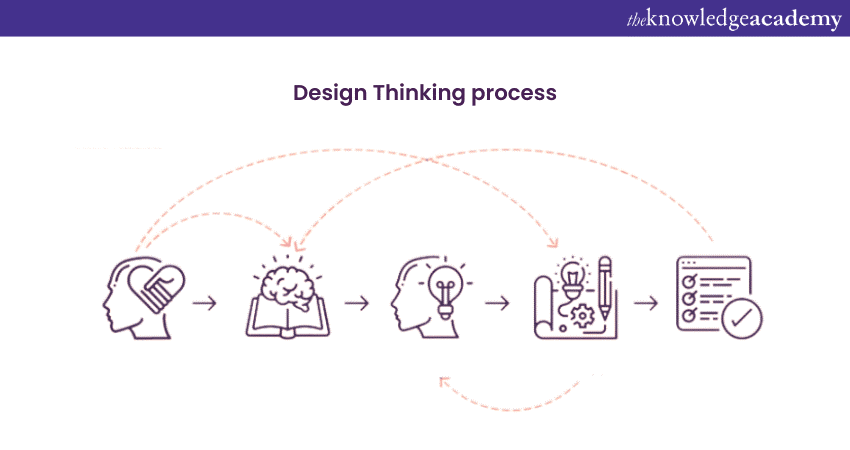
To initiate the Design Thinking process, the first step is to practice empathy. In order to create products and services that are appealing, it is essential to comprehend the users and their requirements. What are their anticipations regarding the product you are designing? What issues and difficulties are they encountering within this particular context?
During the empathise phase, you spend time observing and engaging with real users. This might involve conducting interviews and seeing how they interact with an existing product. You should pay attention to facial expressions and body language. During the empathise phase in the Design Thinking Process , it's crucial to set aside assumptions and gain first-hand insights to design with real users in mind. That's the essence of Design Thinking.
During the second stage of the Design Thinking process, the goal is to identify the user’s problem. To accomplish this, collect all your observations from the empathise phase and begin to connect the dots.
Ask yourself: What consistent patterns or themes did you notice? What recurring user needs or challenges were identified? After synthesising your findings, you must create a problem statement, also known as a Point Of View (POV) statement, which outlines the issue or challenge you aim to address. By the end of the define stage, you will be able to craft a clear problem statement that will guide you throughout the design process, forming the basis of your ideas and potential solutions.
After completing the first two stages of the Design Thinking process, which involve defining the target users and identifying the problem statement, it is now time to move on to the third stage - ideation. This stage is all about brainstorming and coming up with various ideas and solutions to solve the problem statement. Through ideation, the team can explore different perspectives and possibilities and select the best ideas to move forward with.
During the ideation phase, it is important to create an environment where everyone feels comfortable sharing their ideas without fear of judgment. This phase is all about generating a large quantity of ideas, regardless of feasibility. This is done by encouraging the team to think outside the box and explore new angles. To maximise creativity, ideation sessions are often held in unconventional locations.
It’s time to transform the ideas from stage three into physical or digital prototypes. A prototype is a miniature model of a product or feature, which can be as simple as a paper model or as complex as an interactive digital representation.
During the Prototyping Stage , the primary objective is to transform your ideas into a tangible product that can be tested by actual users. This is crucial in maintaining a user-centric approach, as it enables you to obtain feedback before proceeding to develop the entire product. By doing so, you can ensure that the final design adequately addresses the user's problem and delivers an enjoyable user experience.
During the Design Thinking process, the fifth step involves testing your prototypes by exposing them to real users and evaluating their performance. Throughout this testing phase, you can observe how your target or prospective users engage with your prototype. Additionally, you can gather valuable feedback from your users about their experiences throughout the process.
Based on the feedback received during user testing, you can go back and make improvements to the design. It is important to remember that the Design Thinking process is iterative and non-linear. After the testing phase, it may be necessary to revisit the empathise stage or conduct additional ideation sessions before creating a successful prototype.
Unlock the power of Design Thinking – Sign up for our comprehensive Design Thinking for R&D Engineers Training Today!
Successful Design Thinking Case Studies
Now that you have a foundational understanding of Design Thinking, let's explore how some of the world's most successful companies have leveraged this methodology to drive innovation and success:
Case Study 1: Airbnb
Airbnb’s one of the popular Design Thinking Case Studies that you can aspire from. Airbnb disrupted the traditional hotel industry by applying Design Thinking principles to create a platform that connects travellers with unique accommodations worldwide. The founders of Airbnb, Brian Chesky, Joe Gebbia, and Nathan Blecharczyk, started by identifying a problem: the cost and lack of personalisation in traditional lodging.
They conducted in-depth user research by staying in their own listings and collecting feedback from both hosts and guests. This empathetic approach allowed them to design a platform that not only met the needs of travellers but also empowered hosts to provide personalised experiences.
Airbnb's intuitive website and mobile app interface, along with its robust review and rating system, instil trust and transparency, making users feel comfortable choosing from a vast array of properties. Furthermore, the "Experiences" feature reflects Airbnb's commitment to immersive travel, allowing users to book unique activities hosted by locals.
Case Study 2. Apple
Apple Inc. has consistently been a pioneer in Design Thinking, which is evident in its products, such as the iPhone. One of the best Design Thinking Examples from Apple is the development of the iPhone's User Interface (UI). The team at Apple identified the need for a more intuitive and user-friendly smartphone experience. They conducted extensive research and usability testing to understand user behaviours, pain points, and desires.
The result? A revolutionary touch interface that forever changed the smartphone industry. Apple's relentless focus on the user experience, combined with iterative prototyping and user feedback, exemplifies the power of Design Thinking in creating groundbreaking products.
Apple invests heavily in user research to anticipate what customers want before they even realise it themselves. This empathetic approach to design has led to groundbreaking innovations like the iPhone, iPad, and MacBook, which have redefined the entire industry.
Case Study 3. Netflix
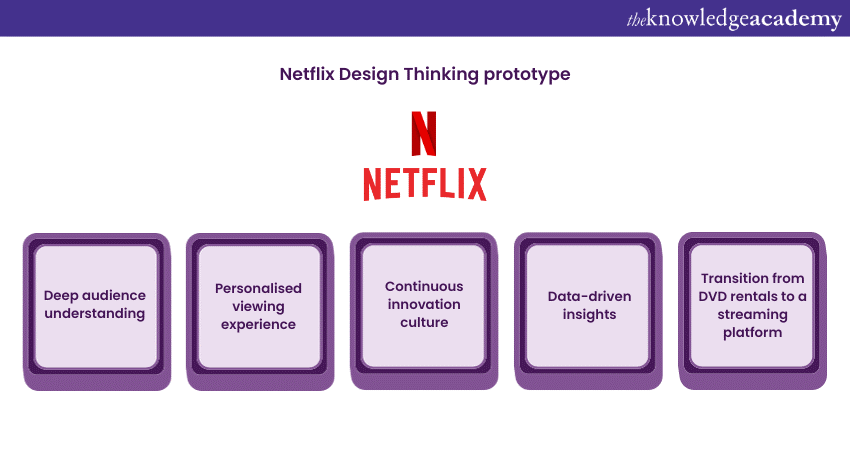
Netflix, the global streaming giant, has revolutionised the way people consume entertainment content. A major part of their success can be attributed to their effective use of Design Thinking principles.
What sets Netflix apart is its commitment to understanding its audience on a profound level. Netflix recognised that its success hinged on offering a personalised, enjoyable viewing experience. Through meticulous user research, data analysis, and a culture of innovation, Netflix constantly evolves its platform. Moreover, by gathering insights on viewing habits, content preferences, and even UI, the company tailors its recommendations, search algorithms, and original content to captivate viewers worldwide.
Furthermore, Netflix's iterative approach to Design Thinking allows it to adapt quickly to shifting market dynamics. This agility proved crucial when transitioning from a DVD rental service to a streaming platform. Netflix didn't just lead this revolution; it shaped it by keeping users' desires and behaviours front and centre. Netflix's commitment to Design Thinking has resulted in a highly user-centric platform that keeps subscribers engaged and satisfied, ultimately contributing to its global success.
Case Study 4. Uber Eats
Uber Eats, a subsidiary of Uber, has disrupted the food delivery industry by applying Design Thinking principles to enhance user experiences and create a seamless platform for food lovers and restaurants alike.
One of UberEats' key innovations lies in its user-centric approach. By conducting in-depth research and understanding the pain points of both consumers and restaurant partners, they crafted a solution that addresses real-world challenges. The user-friendly app offers a wide variety of cuisines, personalised recommendations, and real-time tracking, catering to the diverse preferences of customers.
Moreover, UberEats leverages technology and data-driven insights to optimise delivery routes and times, ensuring that hot and fresh food reaches customers promptly. The platform also empowers restaurant owners with tools to efficiently manage orders, track performance, and expand their customer base.
Case Study 5 . IBM
IBM is a prime example of a large corporation successfully adopting Design Thinking to drive innovation and transform its business. Historically known for its hardware and software innovations, IBM recognised the need to evolve its approach to remain competitive in the fast-paced technology landscape.
IBM's Design Thinking journey began with a mission to reinvent its enterprise software solutions. The company transitioned from a product-centric focus to a user-centric one. Instead of solely relying on technical specifications, IBM started by empathising with its customers. They started to understand customer’s pain points, and envisioning solutions that genuinely addressed their needs.
One of the key elements of IBM's Design Thinking success is its multidisciplinary teams. The company brought together designers, engineers, marketers, and end-users to collaborate throughout the product development cycle. This cross-functional approach encouraged diverse perspectives, fostering creativity and innovation.
IBM's commitment to Design Thinking is evident in its flagship projects such as Watson, a cognitive computing system, and IBM Design Studios, where Design Thinking principles are deeply embedded into the company's culture.
Elevate your Desing skills in Instructional Design – join our Instructional Design Training Course now!
Case Study 6. Oral-B’s electric toothbrush
Oral-B, a prominent brand under the Procter & Gamble umbrella, stands out as a remarkable example of how Design Thinking can be executed in a seemingly everyday product—Electric toothbrushes. By applying the Design Thinking approach, Oral-B has transformed the world of oral hygiene with its electric toothbrushes.
Oral-B's journey with Design Thinking began by placing the user firmly at the centre of their Product Development process. Through extensive research and user feedback, the company gained invaluable insights into oral care habits, preferences, and pain points. This user-centric approach guided Oral-B in designing electric toothbrushes that not only cleaned teeth more effectively but also made the entire oral care routine more engaging and enjoyable.
Another of Oral-B's crucial innovations is the integration of innovative technology into their toothbrushes. These devices now come equipped with features like real-time feedback, brushing timers, and even Bluetooth connectivity to sync with mobile apps. By embracing technology and user-centric design, Oral-B effectively transformed the act of brushing teeth into an interactive and informative experience. This has helped users maintain better oral hygiene.
Oral-B's success story showcases how Design Thinking, combined with a deep understanding of user needs, can lead to significant advancements, ultimately improving both the product and user satisfaction.
Case Study 7. IDEO
IDEO, a Global Design Consultancy, has been at the forefront of Design Thinking for decades. They have worked on diverse projects, from creating innovative medical devices to redesigning public services.
One of their most notable Design Thinking examples is the development of the "DeepDive" shopping cart for a major retailer. IDEO's team spent weeks observing shoppers, talking to store employees, and prototyping various cart designs. The result was a cart that not only improved the shopping experience but also increased sales. IDEO's human-centred approach, emphasis on empathy, and rapid prototyping techniques demonstrate how Design Thinking can drive innovation and solve real-world problems.
Upgrade your creativity skills – register for our Creative Leader Training today!
Case Study 8 . Tesla
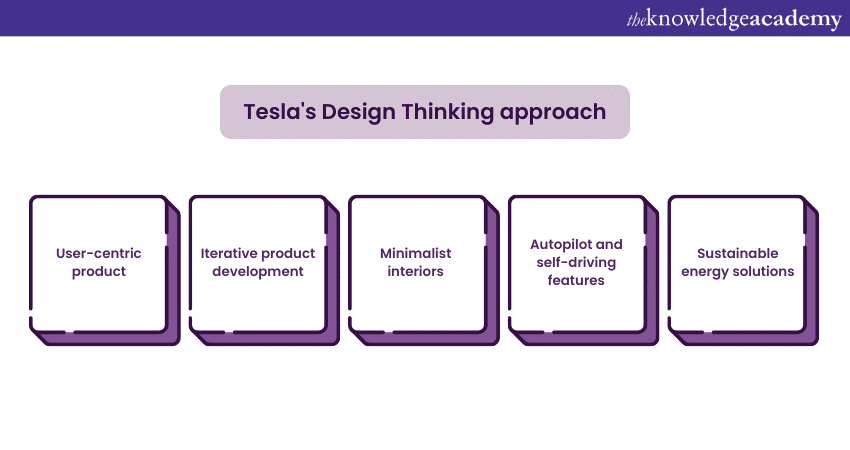
Tesla, led by Elon Musk, has redefined the automotive industry by applying Design Thinking to Electric Vehicles (EVs). Musk and his team identified the need for EVs to be not just eco-friendly but also desirable. They focused on designing EVs that are stylish, high-performing, and technologically advanced. Tesla's iterative approach, rapid prototyping, and constant refinement have resulted in groundbreaking EVs like the Model S, Model 3, and Model X.
From the minimalist interior of their Model S to the autopilot self-driving system, every aspect is meticulously crafted with the end user in mind. The company actively seeks feedback from its user community, often implementing software updates based on customer suggestions. This iterative approach ensures that Tesla vehicles continually evolve to meet and exceed customer expectations .
Moreover, Tesla's bold vision extends to sustainable energy solutions, exemplified by products like the Powerwall and solar roof tiles. These innovations showcase Tesla's holistic approach to Design Thinking, addressing not only the automotive industry's challenges but also contributing to a greener, more sustainable future.
Case Study 9. GE Healthcare
GE Healthcare is a prominent player in the Healthcare industry, renowned for its relentless commitment to innovation and design excellence. Leveraging Design Thinking principles, GE Healthcare has consistently pushed the boundaries of medical technology, making a significant impact on patient care worldwide.
One of the key areas where GE Healthcare has excelled is in the development of cutting-edge medical devices and diagnostic solutions. Their dedication to user-centred design has resulted in devices that are not only highly functional but also incredibly intuitive for healthcare professionals to operate. For example, their advanced Medical Imaging equipment, such as MRI and CT scanners, are designed with a focus on patient comfort, safety, and accurate diagnostics. This device reflects the company's dedication to improving healthcare outcomes.
Moreover, GE Healthcare's commitment to design extends beyond the physical product. They have also ventured into software solutions that facilitate data analysis and Patient Management. Their user-friendly software interfaces and data visualisation tools have empowered healthcare providers to make more informed decisions, enhancing overall patient care and treatment planning.
Case Study 10. Nike
Nike is a global powerhouse in the athletic apparel and Footwear industry. Nike's journey began with a simple running shoe, but its design-thinking approach transformed it into an iconic brand.
Nike's Design Thinking journey started with a deep understanding of athletes' needs and desires. They engaged in extensive user research, often collaborating with top athletes to gain insights that inform their product innovations. This customer-centric approach allowed Nike to develop ground breaking technologies, such as Nike Air and Flyknit, setting new standards in comfort, performance, and style.
Beyond product innovation, Nike's brand identity itself is a testament to Design Thinking. The iconic Swoosh logo, created by Graphic Designer Carolyn Davidson, epitomises simplicity and timelessness, reflecting the brand's ethos.
Nike also excels in creating immersive retail experiences, using Design Thinking to craft spaces that engage and inspire customers. Their flagship stores around the world are showcases of innovative design, enhancing the overall brand perception.
Lessons learned from Design Thinking Case Studies
The Design Thinking process, as exemplified by the success stories of IBM, Netflix, Apple, and Nike, offers valuable takeaways for businesses of all sizes and industries. Here are three key lessons to learn from these Case Studies:
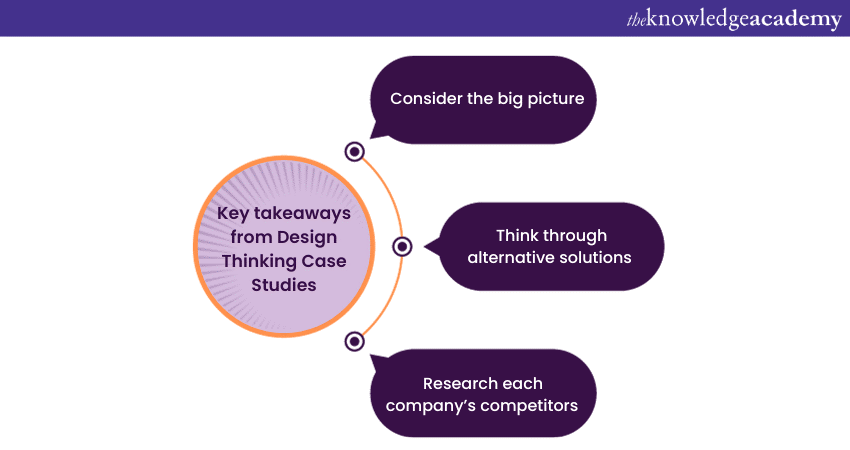
1) Consider the b ig p icture
Design Thinking encourages organisations to zoom out and view the big picture. It's not just about solving a specific problem but understanding how that problem fits into the broader context of user needs and market dynamics. By taking a holistic approach, you can identify opportunities for innovation that extend beyond immediate challenges. IBM's example, for instance, involved a comprehensive evaluation of their clients' journeys, leading to more impactful solutions.
2) Think t hrough a lternative s olutions
One of the basic principles of Design Thinking is ideation, which emphasises generating a wide range of creative solutions. Netflix's success in content recommendation, for instance, came from exploring multiple strategies to enhance user experience. When brainstorming ideas and solutions, don't limit yourself to the obvious choices. Encourage diverse perspectives and consider unconventional approaches that may lead to breakthrough innovations.
3) Research e ach c ompany’s c ompetitors
Lastly, researching competitors is essential for staying competitive. Analyse what other companies in your industry are doing, both inside and outside the realm of Design Thinking. Learn from their successes and failures. GE Healthcare, for example, leveraged Design Thinking to improve medical equipment usability, giving them a competitive edge. By researching competitors, you can gain insights that inform your own Design Thinking initiatives and help you stand out in the market.
Incorporating these takeaways into your approach to Design Thinking can enhance your problem-solving capabilities, foster innovation, and ultimately lead to more successful results.
Conclusion
Design Thinking is not limited to a specific industry or problem domain; it is a versatile approach that promotes innovation and problem-solving in various contexts. In this blog, we've examined successful Design Thinking Case Studies from industry giants like IBM, Netflix, Apple, Airbnb, Uber Eats, and Nike. These companies have demonstrated that Design Thinking is a powerful methodology that can drive innovation, enhance user experiences, and lead to exceptional business success.
Start your journey towards creative problem-solving – register for our Design Thinking Training now!
Frequently Asked Questions
Design Thinking Case Studies align with current market demands and user expectations by showcasing practical applications of user-centric problem-solving. These Studies highlight the success of empathetic approaches in meeting evolving customer needs.
By analysing various real-world examples, businesses can derive vital insights into dynamic market trends, creating innovative solutions, and enhancing user experiences. Design Thinking's emphasis on iterative prototyping and collaboration resonates with the contemporary demand for agility and adaptability.
Real-world examples of successful Design Thinking implementations can be found in various sources. For instance, you can explore several Case Study repositories on Design Thinking platforms like IDEO and Design Thinking Institute. Furthermore, you can also look for business publications, such as the Harvard Business Review as well as Fast Company, which often feature articles on successful Design Thinking applications.
The Knowledge Academy takes global learning to new heights, offering over 30,000 online courses across 490+ locations in 220 countries. This expansive reach ensures accessibility and convenience for learners worldwide.
Alongside our diverse Online Course Catalogue , encompassing 17 major categories, we go the extra mile by providing a plethora of free educational Online Resources like News updates, blogs, videos, webinars, and interview questions. Tailoring learning experiences further, professionals can maximise value with customisable Course Bundles of TKA .
The Knowledge Academy’s Knowledge Pass , a prepaid voucher, adds another layer of flexibility, allowing course bookings over a 12-month period. Join us on a journey where education knows no bounds.
The Knowledge Academy offers various Leadership Training Courses , including Leadership Skills Training, Design Thinking Course, and Creative and Analytical Thinking Training. These courses cater to different skill levels, providing comprehensive insights into Leadership Training methodologies.
Our Leadership Training blogs covers a range of topics related to Design Thinking, offering valuable resources, best practices, and industry insights. Whether you are a beginner or looking to advance your Design Thinking skills, The Knowledge Academy's diverse courses and informative blogs have you covered.
Upcoming Business Skills Resources Batches & Dates
Fri 7th Jun 2024
Fri 2nd Aug 2024
Fri 4th Oct 2024
Fri 6th Dec 2024
Get A Quote
WHO WILL BE FUNDING THE COURSE?
My employer
By submitting your details you agree to be contacted in order to respond to your enquiry
- Business Analysis
- Lean Six Sigma Certification
Share this course
Our biggest spring sale.

We cannot process your enquiry without contacting you, please tick to confirm your consent to us for contacting you about your enquiry.
By submitting your details you agree to be contacted in order to respond to your enquiry.
We may not have the course you’re looking for. If you enquire or give us a call on 01344203999 and speak to our training experts, we may still be able to help with your training requirements.
Or select from our popular topics
- ITIL® Certification
- Scrum Certification
- Change Management Certification
- Business Analysis Courses
- Microsoft Azure Certification
- Microsoft Excel Courses
- Microsoft Project
- Explore more courses
Press esc to close
Fill out your contact details below and our training experts will be in touch.
Fill out your contact details below
Thank you for your enquiry!
One of our training experts will be in touch shortly to go over your training requirements.
Back to Course Information
Fill out your contact details below so we can get in touch with you regarding your training requirements.
* WHO WILL BE FUNDING THE COURSE?
Preferred Contact Method
No preference
Back to course information
Fill out your training details below
Fill out your training details below so we have a better idea of what your training requirements are.
HOW MANY DELEGATES NEED TRAINING?
HOW DO YOU WANT THE COURSE DELIVERED?
Online Instructor-led
Online Self-paced
WHEN WOULD YOU LIKE TO TAKE THIS COURSE?
Next 2 - 4 months
WHAT IS YOUR REASON FOR ENQUIRING?
Looking for some information
Looking for a discount
I want to book but have questions
One of our training experts will be in touch shortly to go overy your training requirements.
Your privacy & cookies!
Like many websites we use cookies. We care about your data and experience, so to give you the best possible experience using our site, we store a very limited amount of your data. Continuing to use this site or clicking “Accept & close” means that you agree to our use of cookies. Learn more about our privacy policy and cookie policy cookie policy .
We use cookies that are essential for our site to work. Please visit our cookie policy for more information. To accept all cookies click 'Accept & close'.
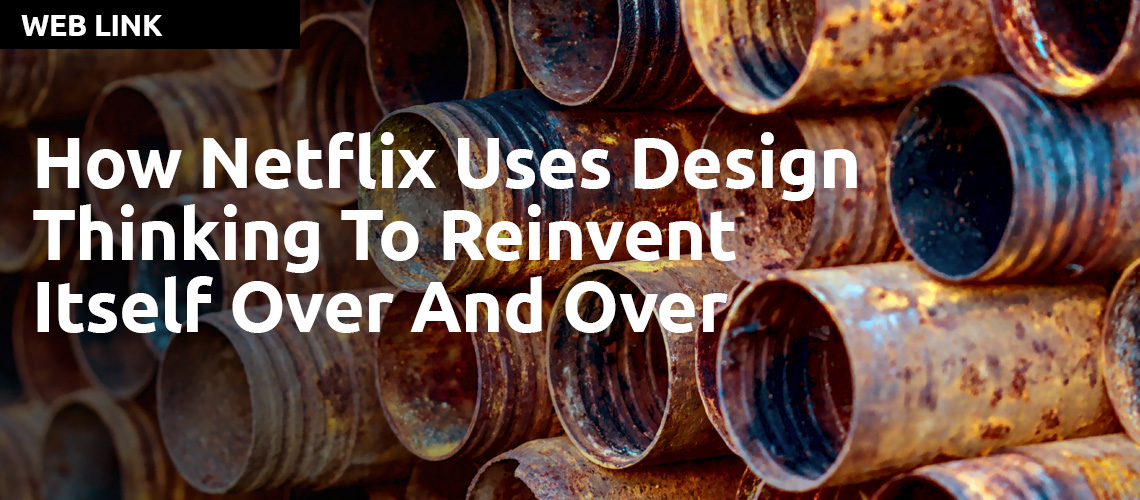
How Netflix Uses Design Thinking to Reinvent Itself Over and Over
Netflix Design Thinking? You bet! Within the past decade, there isn’t a better example of a business that has pivoted on the basis of customer preferences, wants and needs than Netflix. And there’s no better example of a business that didn’t, than Netflix competitor Blockbuster.
Do you remember when you had to drive to Blockbuster to get the latest new releases on video or DVD? In its early days, Netflix was a service that delivered movies to customers direct to your doorstep by mail. That was an innovative model until cable companies started offering movies on-demand. Why would someone order from Netflix and wait a few days for a physical cassette when they could stream a movie right there and then?
Time for some Netflix Design Thinking?
Read more...

DesignPlayStore’s Newsletter

Netflix and Design Thinking
How netflix innovates and wins using design thinking.
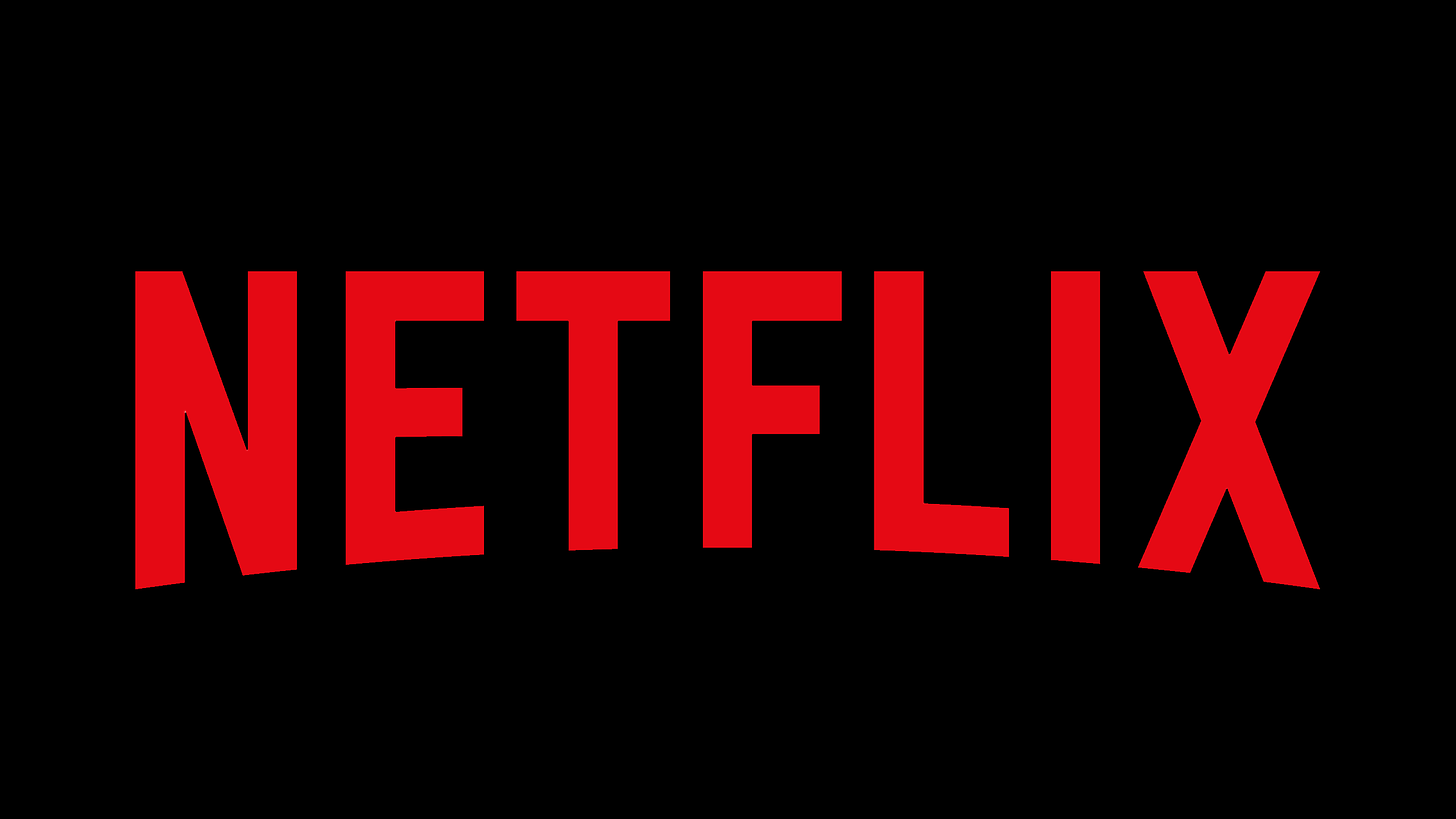
Who Doesn’t Know about Netflix? An innovator and Design Thinking Practitioner which has over 203.6 million subscribers in 190 countries. But how did it all began?
It all began in 1997 with the vision of founder Reed Hasting to stream movies directly to the Homes of people via the internet.
Back in the days, Netflix started as a service that delivered movies to the doorsteps of customers via customer mail. However, soon cable companies began offering movies-on-demand.
Netflix used the approach of Design Thinking , understood the needs and expectations of its customers and transformed its Business Model.
Netflix illustrates a design principle that any company aspiring to succeed at disruptive innovation must adopt. It has four parts:
Start Small
Fail Quickly
Think Big and Start Small
In the year 2001, Reed Hastings nearly spent $10 million a year to research on streaming. He took the bold risk to forgo the company’s tiny profit.
Additionally, He kept on testing quickly and rapidly on offering streaming video. After conducting series of Streaming Test to understand the feasibility, Netflix started by giving it away as part of DVD subscriptions. In this way, he made people get used to streaming while he kept on building his library of offerings.
Finally, in 2010, after 10 years of testing and experimenting , Netflix offered a streaming-only option at half the price of its DVD subscription. Hence, It captured the market while broadband and internet services started to grow rapidly.
Fail Quickly and Scale Fast
When early efforts at streaming video looked uncertain, Hastings adopted the poker player’s mantra that most money is lost early in a hand, when the tendency is to hope that something good will materialize even though reason suggests otherwise. Hastings folded his hands, saving his money for the day when he finally got a good hand. Netflix is now scaling streaming video fast, maintaining the lead it worked so hard to build over competitors. Numerous companies have, however, won early battles and lost the war at this stage of innovation. Magical innovations are successfully developed but never find a home because, unlike Netflix, the company isn’t willing to attack its core business.
Understanding Customers.
Unlike others, Netflix never appealed to the masses. In fact, it has always catered to niches and understood what they needed.
So, Netflix didn’t stop there and kept on using Design Thinking to Innovate. And soon understood and Recognized that customers were hungry for more provocative content. In 2011, Netflix began to create its own content, like Stranger Things , Black Mirror. The shows were far too provocative for the general public but loved by the target audience.
In order to further delight its customers, Netflix in 2016 brought changes to its interface. Instead of looking at still images or posters, Customers could see the trailers while scrolling the interface.
Netflix doesn’t show any signs of stopping , the company came up with a download-and-go feature to let customers download the content offline. In this way, Netflix is revolutionizing the User Experience by using Design Thinking. Read more here
Thank you for reading.
Shivani from DesignPlayStore.
Ready for more?

Users are spending more time looking for content to watch during the pandemic, but the sheer volume of movies and shows on the platform make finding content difficult. How might Netflix be able to mitigate the problem of choice paralysis?
Research shows that people tend to watch netflix on tv.

Early insights about how Netflix personalizes content

- Ordering / ranking of videos horizontally
- Selection and placement of rows
- Personalized thumbnail images
- Reaching out to members directly about new or upcoming titles
Deeper insights from primary research shows that people generally have a hard time choosing what to watch

Understanding common user painpoints
.png)
Defining the flow of a new recommendation tool

I had a minor setback, and needed to reframe the problem
- Time - movie or TV show?
- Mood - Lighthearted? Dramatic?
- Genres - based on mood
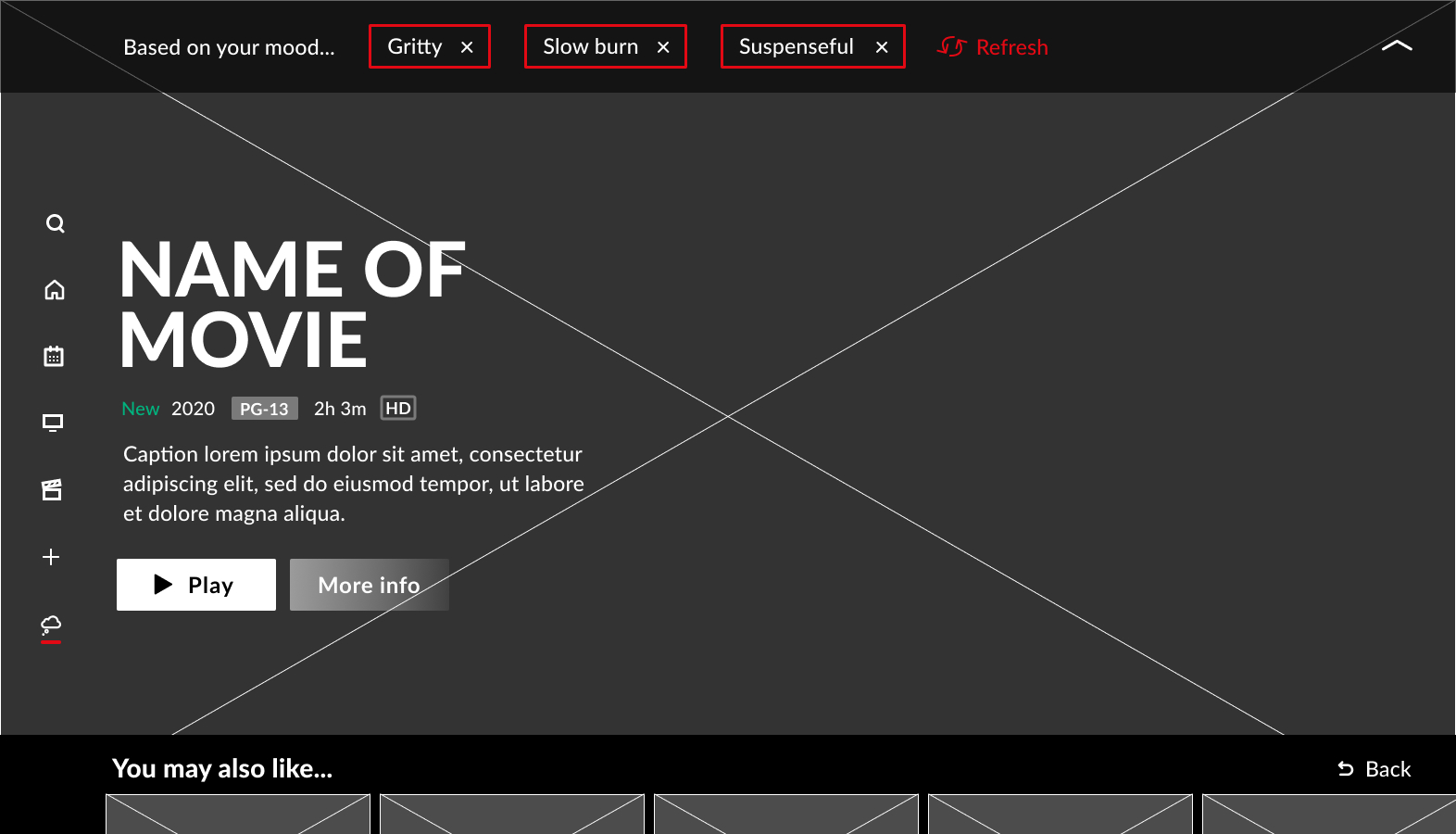

Introducing : Netflix Rapidfire

Refining the quiz function through A/B testing
Adapt to familiarity rather than switching the ui.

Measuring success for first roll-out through user feedback
Final design.
Project takeaways

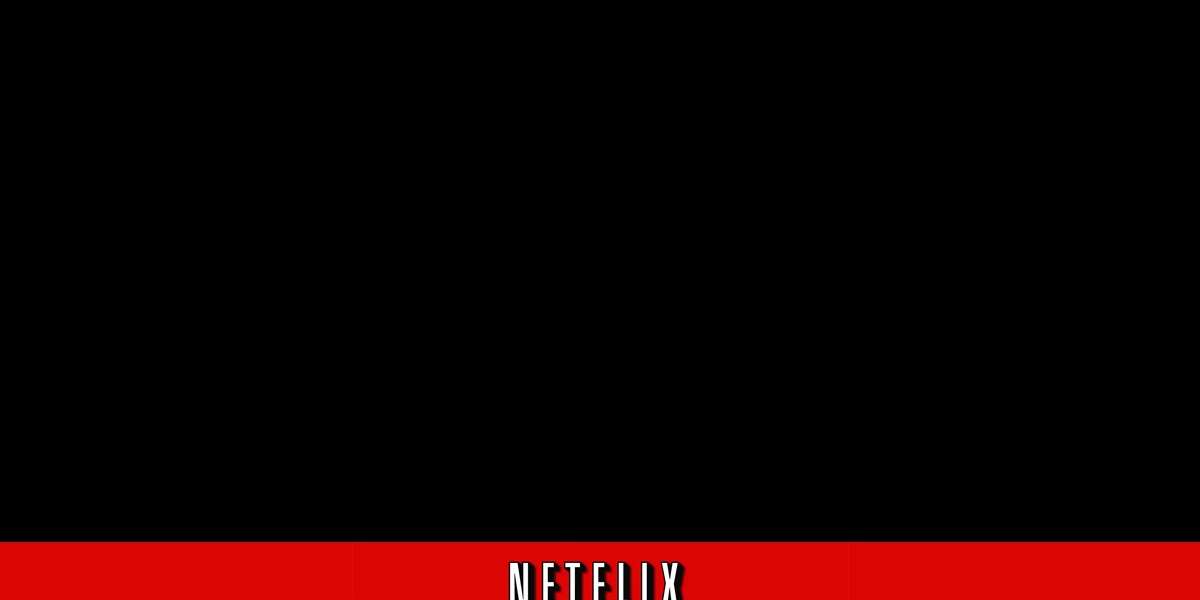
Netflix — A design thinking approach
An analysis to leverage design thinking approaches

In the past few years, we have witnessed how the streaming platforms can completely revolutionize how people look at the entertainment industry altogether. Before the advent of streaming platforms, people used to go to theatres, rent out movies via DVD’s, VHS tapes. But those days are long gone, started as a simple DVD rental company, Now Netflix has become a giant in the entertainment industry who nobody wants to mess with. A recent survey has stated that people forgot when was their last time going to a theatre. Netflix is adding nearly 13–18% of new subscribers every year. Netflix is now a 150M+ user streaming entertainment industry by itself. No wonder it has gained all the fame because of the quality it has provided over the past 13 years. Netflix has spent 15B dollars on its contents in the year 2019. In short, Netflix has disrupted the whole cable and TV programming model.
A business can never sustain without listening to constructive feedback from its customers. Similarly, Netflix also has received many suggestions and features to be incorporated into it. No task is simple, Similarly to listen and address all queries is nearly impossible, So as a binge-watcher I took the liberty to design empathize, ideate and prototype few issues.
Content Searching vs Content Watching
Searching content to watch can be a really painful task. If you agree with me then you are not alone, 20% of users activity goes just for searching. Doesn’t this number look convincing? OKAY As of 2015–16, ~83 minutes is the average daily user activity. Out of which ~20 minutes is spent on searching, which adds up to ~126 hours per year per user. So as of 2019 with ~150M users the same search activity spikes to ~19,945,800,000 hours per year.
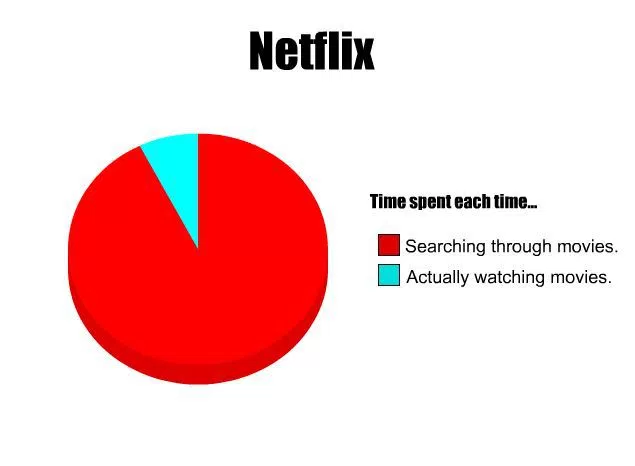
So why not ideate a design to incorporate a random movie generator into Netflix. Although there are different third-party applications that provide suggestions, I feel that will not match an in-house feature.
Feature 1: Surprise Me

Bring back Peer-to-Peer Rating
I believe Netflix has stopped the Peer-to-Peer rating feature which I feel to be a very good feature. This can prevent many users from watching badly reviewed content.
Feature 2: Rating System

PS: The image is just for illustration purposes. Nobody gives Sherlock 3 star rating. #SHERLOCKED
For the love of Trial Periods ❤
One-stop solution for free trial period members out there. Are you tired of automatic renewal when Netflix’s trial month is over? Or You would like to take a break from Binge-watching the upcoming month and need to be alerted about the billing? Sadly currently there is no option for you to be notified about the billings.
Feature 3: Auto-Renewal Alert Setup

I don’t think this might create a dent in the $20.15B (Pun intended). But I feel giving user’s more freedom makes a product more trustworthy.
“Are you still watching?”
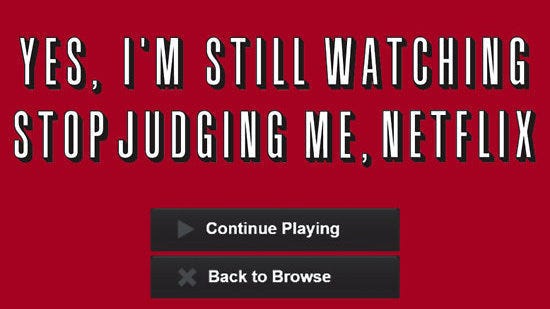
This one phrase has agitated a huge number of binge-watchers over the years. There are many hacks to stop this from happening but personally I prefer not to hack a product and make it work for my ease.
Feature 4: Alternate the buzzkill phrase
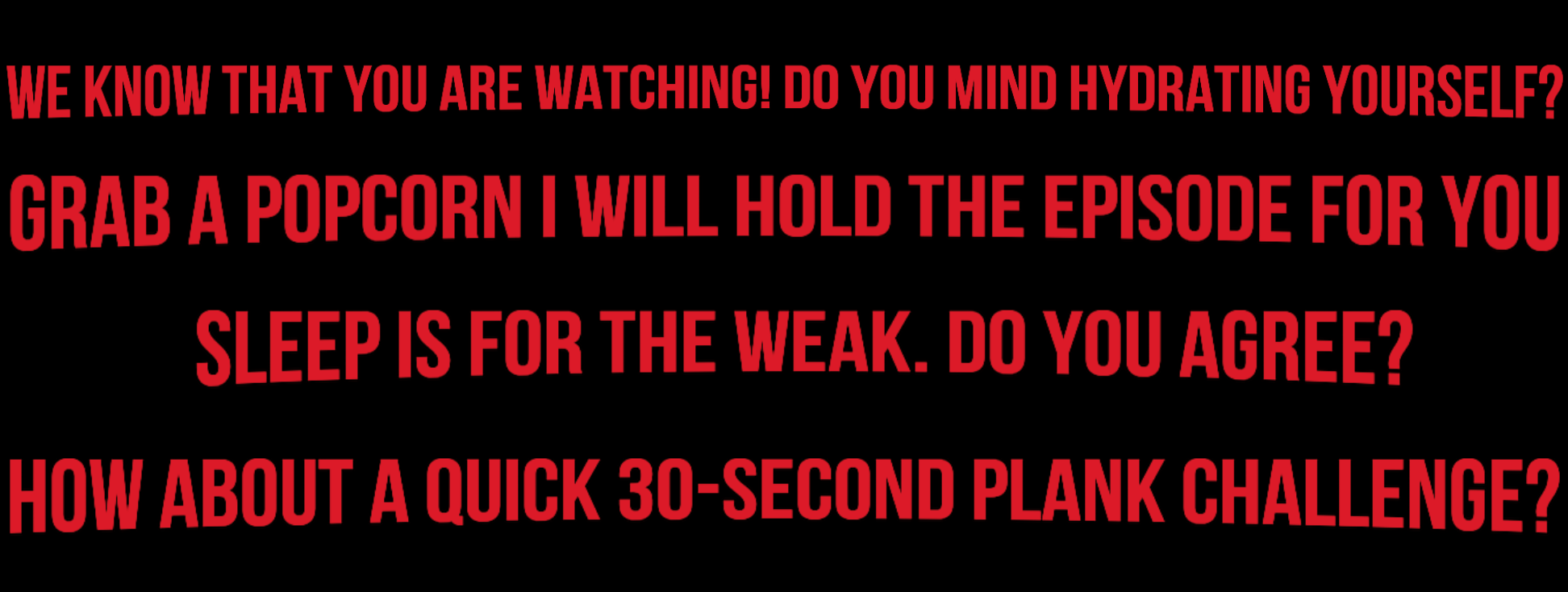
So here are some of the phrases which are supposedly targeted to care about Binge watchers rather than annoying them.
Data Source : https://askwonder.com/research/time-wasted-worldwide-people-looking-movies-watch-netflix-annually-9l4sd364g

Low Level Security Vulnerability
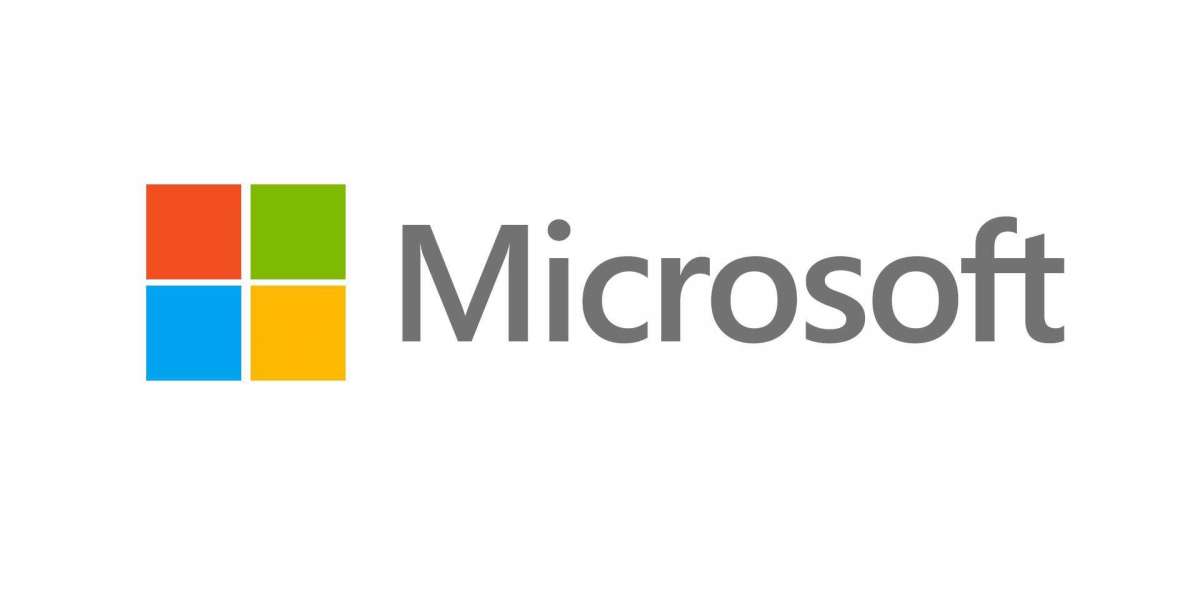
Microsoft's Corporate and IT Strategy
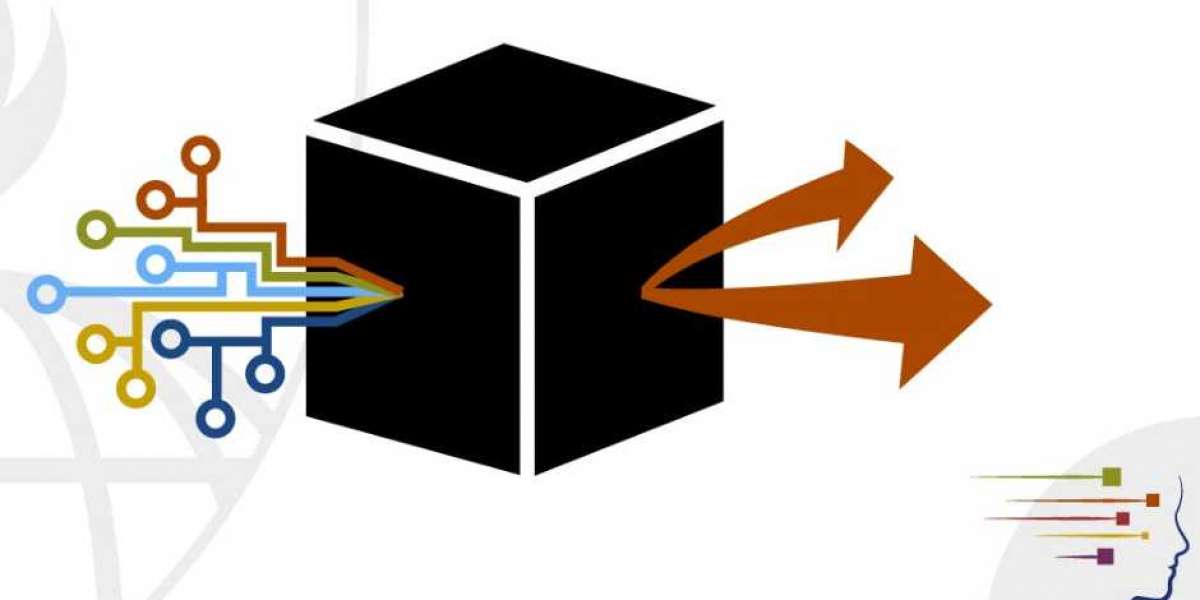
FEATURE ENGINEERING TECHNIQUES OVER NUMERICAL AND CATEGORICAL FEATURES FOR MACHINE LEARNING.
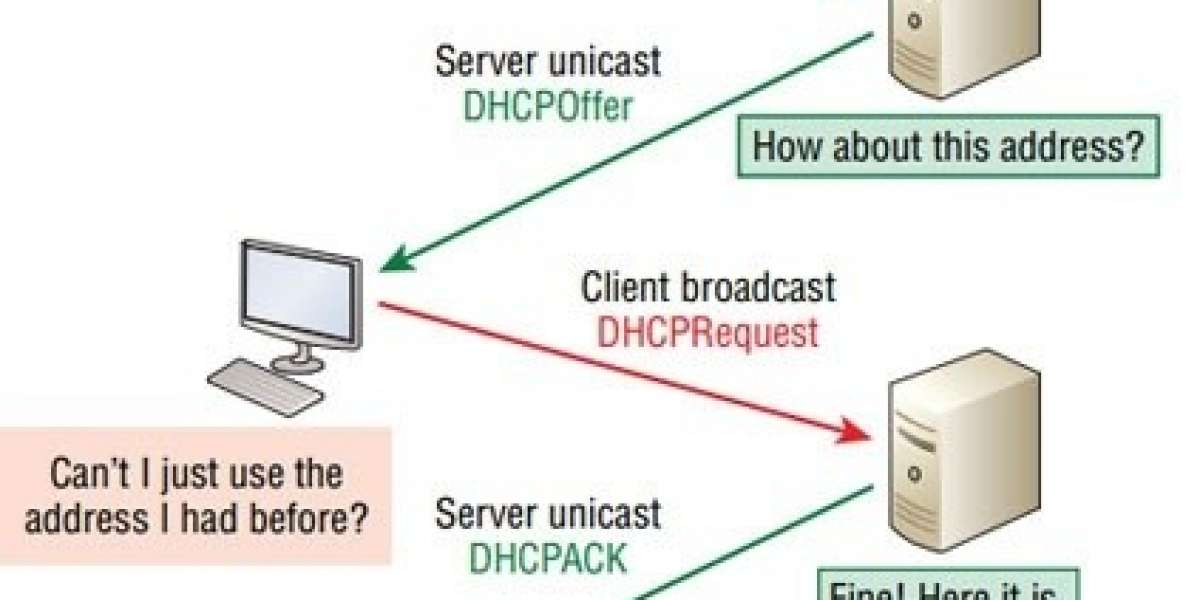
- Cars and Vehicles
- Economics and Trade
- Entertainment
- Movies & Animation
- History and Facts
- News and Politics
- People and Nations
- Pets and Animals
- Places and Regions
- Science and Technology
- Travel and Events
© 2024 Skillsire
- Privacy Policy
- Terms of Use
Comment reported successfully.
Post was successfully added to your timeline!
You have reached your limit of 50000 friends!
File size error: The file exceeds allowed the limit (92 MB) and can not be uploaded.
Your video is being processed, We’ll let you know when it's ready to view.
Unable to upload a file: This file type is not supported.
We have detected some adult content on the image you uploaded, therefore we have declined your upload process.
Share post on a group
Share to a page, share to user.
To upload images, videos, and audio files, you have to upgrade to pro member. Upgrade To Pro
Delete your tier
Pay by wallet, delete your address, payment alert, request a refund.

Design Thinking @Netflix
- Post author: Aron Lausch
- Post published: 2022-04-25
- Post category: How Companies Use Design Thinking / Timeline
- Post comments: 0 Comments
We probably all have a subscription to the most famous streaming provider Netflix. It transformed from a DVD delivering company to a streaming service and is now more and more producing its own movies and series.
Netflix has over 209 million subscribers in over 190 countries and 15,000 titles across all international libraries. They’re one of the most successful streaming services with anannual revenue of over $25 billion. But how and why did Netflix choose to change directions?
Netflix’s Early Days
1997 August 29th – Netflix was founded
- Netflix was founded in 1997 by Marc Randolph and Reed Hastings as a video-rental company. They realized the big pain point for customers to pick up the DVD’s at stores. Therefore, they started offering to mail the DVD’s directly to the customers’ homes and found success in doing so. The founder tested the idea by posting DVD’s to their home and when it arrived without any damage, decided to test the idea.
1998 April 14 – Website launch
- On the first day Netflix got 137 orders, but needed to buy more servers the same day as the website crashed.
1999 – Subscriber-based business model
- Netflix changed their business model from fee per movie to unlimited DVD rentals for one low monthly price.
In 2002 Customers complained about delivery time of the DVD’s
- Netflix opened regional warehouses as a response for overnight delivery.
2007 – Netflix begins streaming content
- As technology advances and enables streaming, Netflix decides to test streaming in Canada with 1,000 titles (included in the 5,99$ per month physical subscription).
2010 – Blockbuster files for bankruptcy.
- As Blockbuster didn’t focus on the needs of its customers it went out of business.
2012 – Netflix starts making original shows
- They released the first show Lilyhammer and then House of Cards, which was a big success.
2016 – Instant Trailer launch instead of pictures
- User Engagement was increased by directly starting the trailer from movies, instead of just showing a still image.
There are 4 phases of design thinking, which can and should be iterated.
- Clarify “observing a situation without bias”
- Ideate “brainstorm possible solutions”
- Develop “develop potential solutions, test, experiment”
- Implement “implement the successful solution, reiterate if needed ”
To encourage innovation Netflix built an environment that allows failure and motivates employees to try out new ideas. They’re given a high degree of independence.
In addition Netflix created constant feedback loops for employees.
- DVD (overnight) delivery
- Online Streaming
- In-House production (Squid Game, House of Cards, …)
Lessons Learned
Netflix never stopped to apply Design Thinking and could grow to the industry giant it’s today. They keep innovating and don’t sleep on new customer needs and therefore new opportunities.
- When the opportunity due to technological advancement occurred to stream movies online, Netflix took it (tested it at one location).
- Dropped early efforts to offer streaming, because the technology wasn’t advanced enough yet.
You Might Also Like

MIA – Design Thinking @ Fressnapf | MAXI ZOO

Children’s toothbrushes – Design Thinking @Oral-B

Adventure Series – Design Thinking @GE Healthcare
Leave a reply cancel reply.
Save my name, email, and website in this browser for the next time I comment.

Media Encoder
- After Effects
- Trapcode Particular
Design Management - Netflix Case Study

Another project for my college course. This time it is about how you can integrate design into business using design management. Numbers are quit Read More

Creative Fields

Interaction Design

Motion Graphics

- Design Management
No use is allowed without explicit permission from owner

- AI Development Use ML tools and algorithms to build intelligent AI-driven apps
- Generative AI Build intelligent generative AI solutions that adapt and evolve
- ML Development Build and deploy custom ML models to automate tasks
- MLOps Build sophisticated ML and CI/CD pipelines and shorten production cycles
- LLM Development Accelerate LLM adoption and streamline its implementation
- Data Science Consulting Get expert guidance to leverage data for operational improvements
- Gen AI and ML Build domain-specific generative AI solutions on AWS
- Migration and Modernization Move your current workloads to AWS Cloud environment
- SaaS Migration and Engineering Build, migrate, and optimize SaaS applications through cloud-native solution
- Data Science and Engineering Build and optimize your data processing pipelines to improve operational efficiency
- Serverless Manage complex workflows and ensure optimal resource utilization
- Cloud Management Improve AWS efficiency, automation, and visibility for better cloud operations
- Product Engineering and Development Build products powered by latest tech stacks and design thinking
- Custom Software Development Build scalable, robust software designed to meet your business needs
- Performance Engineering and Testing Build products that perform optimally in normal and extreme load conditions
- Quality Engineering Ensure product quality and customer satisfaction
- Project Strategy Build an agile, adaptive, and transformative project strategy
- Digital Experience Design Create digital experiences that engage users at every touch point
- Financial Services Build secure, scalable, precision-engineered BFSI solutions
- Retail and E-commerce Ensure a consistent customer experience and operational efficiency
- Healthcare and Life Sciences Build secure, compliant solutions for better patient care and improved efficiency
- Supply Chain & Logistics Bring agility, resilience, and intelligence to your supply chain
- Marketing and Technology Transform marketing efforts and optimize campaigns through intelligent automation
- Manufacturing Adopt modern solutions to automate workflow and improve product quality
- Case Studies
- AI & ML Insights Gain insights on the latest stories, reports, surveys, and updates on AI/ML
- Product Engineering Insights Get a deeper understanding of product development with our expert insights
- Cloud Engineering Insights Stay updated with the latest trends and best practices in cloud engineering
- Blog A collection of insights on latest technology, best practices and proven strategies
- Ebooks Download ebooks from our experts to know the winning strategies, technologies, and trends
- News and Tech Insights Keep up with the latest technology news and insights
How Netflix Became A Master of DevOps? An Exclusive Case Study
Find out how Netflix excelled at DevOps without even thinking about it and became a gold standard in the DevOps world.
Table of Contents
- Netflix's move to the cloud
Netflix’s Chaos Monkey and the Simian Army
Netflix’s container journey, netflix’s “operate what you build” culture, lessons we can learn from netflix’s devops strategy, how simform can help.
Even though Netflix is an entertainment company, it has left many top tech companies behind in terms of tech innovation. With its single video-streaming application, Netflix has significantly influenced the technology world with its world-class engineering efforts, culture, and product development over the years.
One such practice that Netflix is a fantastic example of is DevOps. Their DevOps culture has enabled them to innovate faster, leading to many business benefits. It also helped them achieve near-perfect uptime, push new features faster to the users, and increase their subscribers and streaming hours.
With nearly 214 million subscribers worldwide and streaming in over 190 countries , Netflix is globally the most used streaming service today. And much of this success is owed to its ability to adopt newer technologies and its DevOps culture that allows them to innovate quickly to meet consumer demands and enhance user experiences. But Netflix doesn’t think DevOps.
So how did they become the poster child of DevOps? In this case study, you’ll learn about how Netflix organically developed a DevOps culture with out-of-the-box ideas and how it benefited them.
Simform is a leading DevOps consulting and implementation company , helping businesses build innovative products that meet dynamic user demands efficiently. To grow your business with DevOps, contact us today!
Netflix’s move to the cloud
It all began with the worst outage in Netflix’s history when they faced a major database corruption in 2008 and couldn’t ship DVDs to their members for three days. At the time, Netflix had roughly 8.4 million customers and one-third of them were affected by the outage. It prompted Netflix to move to the cloud and give their infrastructure a complete makeover. Netflix chose AWS as its cloud partner and took nearly seven years to complete its cloud migration.
Netflix didn’t just forklift the systems and dump them into AWS. Instead, it chose to rewrite the entire application in the cloud to become truly cloud-native, which fundamentally changed the way the company operated. In the words of Yury Izrailevsky, Vice President, Cloud and Platform Engineering at Netflix:
“We realized that we had to move away from vertically scaled single points of failure, like relational databases in our datacenter, towards highly reliable, horizontally scalable, distributed systems in the cloud.”
As a significant part of their transformation, Netflix converted its monolithic, data center-based Java application into cloud-based Java microservices architecture. It brought about the following changes:
- Denormalized data model using NoSQL databases
- Enabled teams at Netflix to be loosely coupled
- Allowed teams to build and push changes at the speed that they were comfortable with
- Centralized release coordination
- Multi-week hardware provisioning cycles led to continuous delivery
- Engineering teams made independent decisions using self-service tools
As a result, it helped Netflix accelerate innovation and stumble upon the DevOps culture. Netflix also gained eight times as many subscribers as it had in 2008. And Netflix’s monthly streaming hours also grew a thousand times from Dec 2007 to Dec 2015.
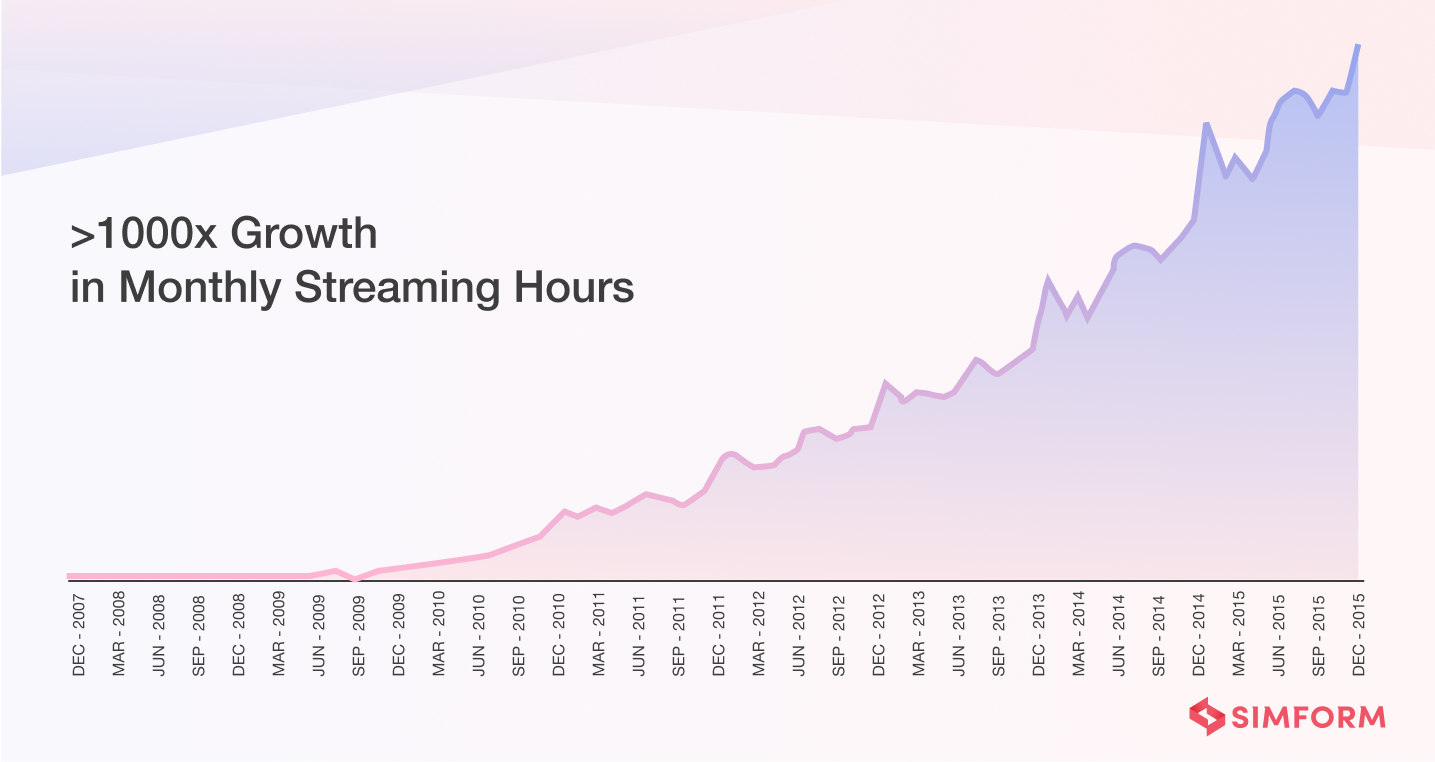
After completing their cloud migration to AWS by 2016, Netflix had:
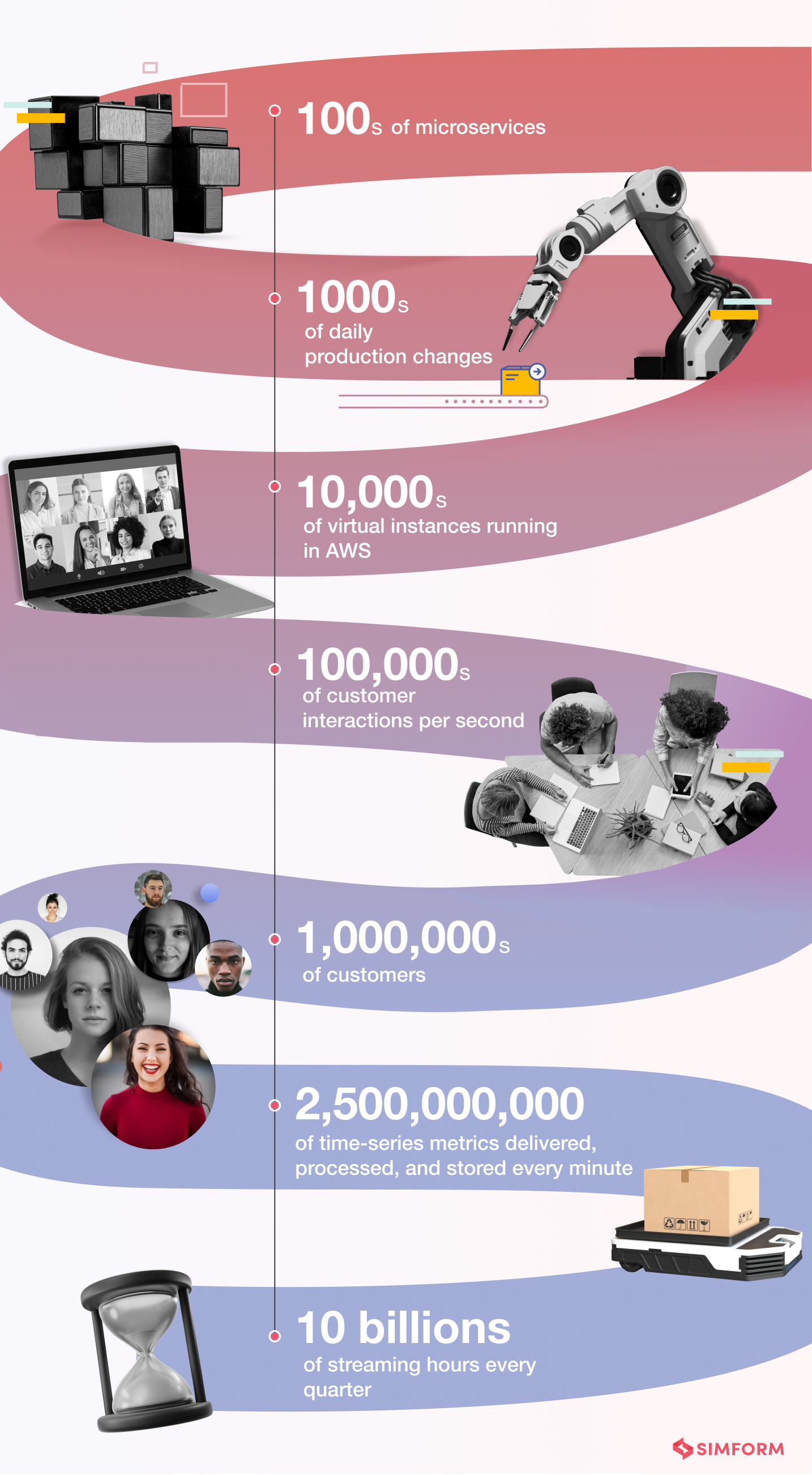
And it handled all of the above with 0 Network Ops Centers and some 70 operations engineers, who were all software engineers focusing on writing tools that enabled other software developers to focus on things they were good at.
Migrating to the cloud made Netflix resilient to the kind of outages it faced in 2008. But they wanted to be prepared for any unseen errors that could cause them equivalent or worse damage in the future.
Engineers at Netflix perceived that the best way to avoid failure was to fail constantly. And so they set out to make their cloud infrastructure more safe, secure, and available the DevOps way – by automating failure and continuous testing.
Chaos Monkey
Netflix created Chaos Monkey, a tool to constantly test its ability to survive unexpected outages without impacting the consumers. Chaos Monkey is a script that runs continuously in all Netflix environments, randomly killing production instances and services in the architecture. It helped developers:
- Identify weaknesses in the system
- Build automatic recovery mechanisms to deal with the weaknesses
- Test their code in unexpected failure conditions
- Build fault-tolerant systems on day to day basis
The Simian Army
After their success with Chaos Monkey, Netflix engineers wanted to test their resilience to all sorts of inevitable failures, detect abnormal conditions. So, they built the Simian Army , a virtual army of tools discussed below.
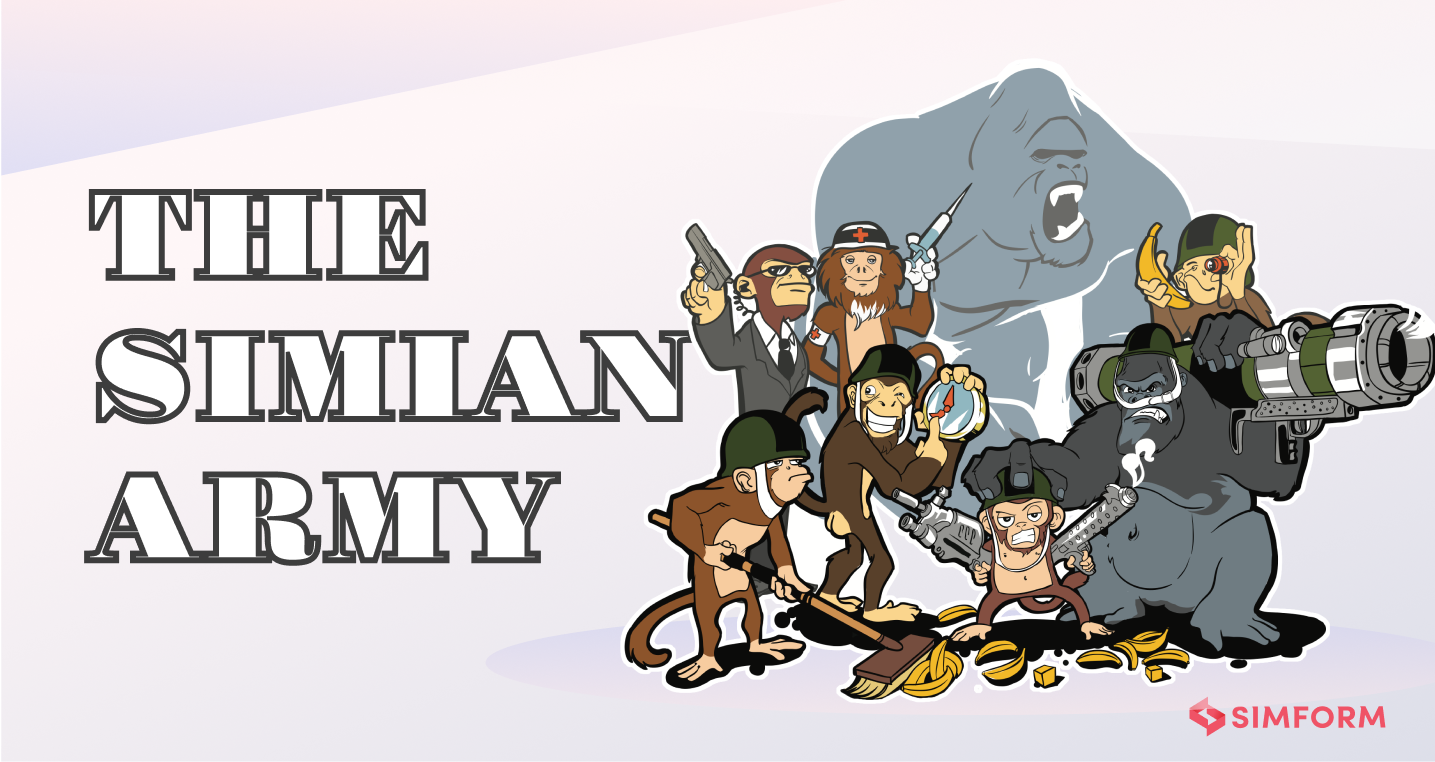
- Latency Monkey
It creates false delays in the RESTful client-server communication layers, simulating service degradation and checking if the upstream services respond correctly. Moreover, creating very large delays can simulate an entire service downtime without physically bringing it down and testing the ability to survive. The tool was particularly useful to test new services by simulating the failure of dependencies without affecting the rest of the system.
- Conformity Monkey
It looks for instances that do not adhere to the best practices and shuts them down, giving the service owner a chance to re-launch them properly.
- Doctor Monkey
It detects unhealthy instances by tapping into health checks running on each instance and also monitors other external health signs (such as CPU load). The unhealthy instances are removed from service and terminated after service owners identify the root cause of the problem.
- Janitor Monkey
It ensures the cloud environment runs without clutter and waste. It also searches for unused resources and discards them.
- Security Monkey
An extension of Conformity Monkey, it identifies security violations or vulnerabilities (e.g., improperly configured AWS security groups) and eliminates the offending instances. It also ensures the SSL (Secure Sockets Layer) and DRM (Digital Rights Management) certificates were valid and not due for renewal.
- 10-18 Monkey
Short for Localization-Internationalization, it identifies configuration and runtime issues in instances serving users in multiple geographic locations with different languages and character sets.
- Chaos Gorilla
Like Chaos Monkey, the Gorilla simulates an outage of a whole Amazon availability zone to verify if the services automatically re-balance to the functional availability zones without manual intervention or any visible impact on users.
Today, Netflix still uses Chaos Engineering and has a dedicated team for chaos experiments called the Resilience Engineering team (earlier called the Chaos team).
In a way, Simian Army incorporated DevOps principles of automation, quality assurance, and business needs prioritization. As a result, it helped Netflix develop the ability to deal with unexpected failures and minimize their impact on users.
On 21st April 2011 , AWS experienced a large outage in the US East region, but Netflix’s streaming ran without any interruption. And on 24th December 2012 , AWS faced problems in Elastic Load Balancer(ELB) services, but Netflix didn’t experience an immediate blackout. Netflix’s website was up throughout the outage, supporting most of their services and streaming, although with higher latency on some devices.
Netflix had a cloud-native, microservices-driven VM architecture that was amazingly resilient, CI/CD enabled, and elastically scalable. It was more reliable, with no SPoFs (single points of failure) and small manageable software components. So why did they adopt container technology? The major factors that prompted Netflix’s investment in containers are:
- Container images used in local development are very similar to those run in production. This end-to-end packaging allows developers to build and test applications easily in production-like environments, reducing development overhead.
- Container images help build application-specific images easily.
- Containers are lightweight, allowing building and deploying them faster than VM infrastructure.
- Containers only have what a single application needs, are smaller and densely packed, which reduces overall infrastructure cost and footprint.
- Containers improve developer productivity, allowing them to develop, deploy, and innovate faster.
Moreover, Netflix teams had already started using containers and seen tangible benefits. But they faced some challenges such as migrating to containers without refactoring, ensuring seamless connectivity between VMs and containers, and more. As a result, Netflix designed a container management platform called Titus to meet its unique requirements.
Titus provided a scalable and reliable container execution solution to Netflix and seamlessly integrated with AWS. In addition, it enabled easy deployment of containerized batches and service applications.
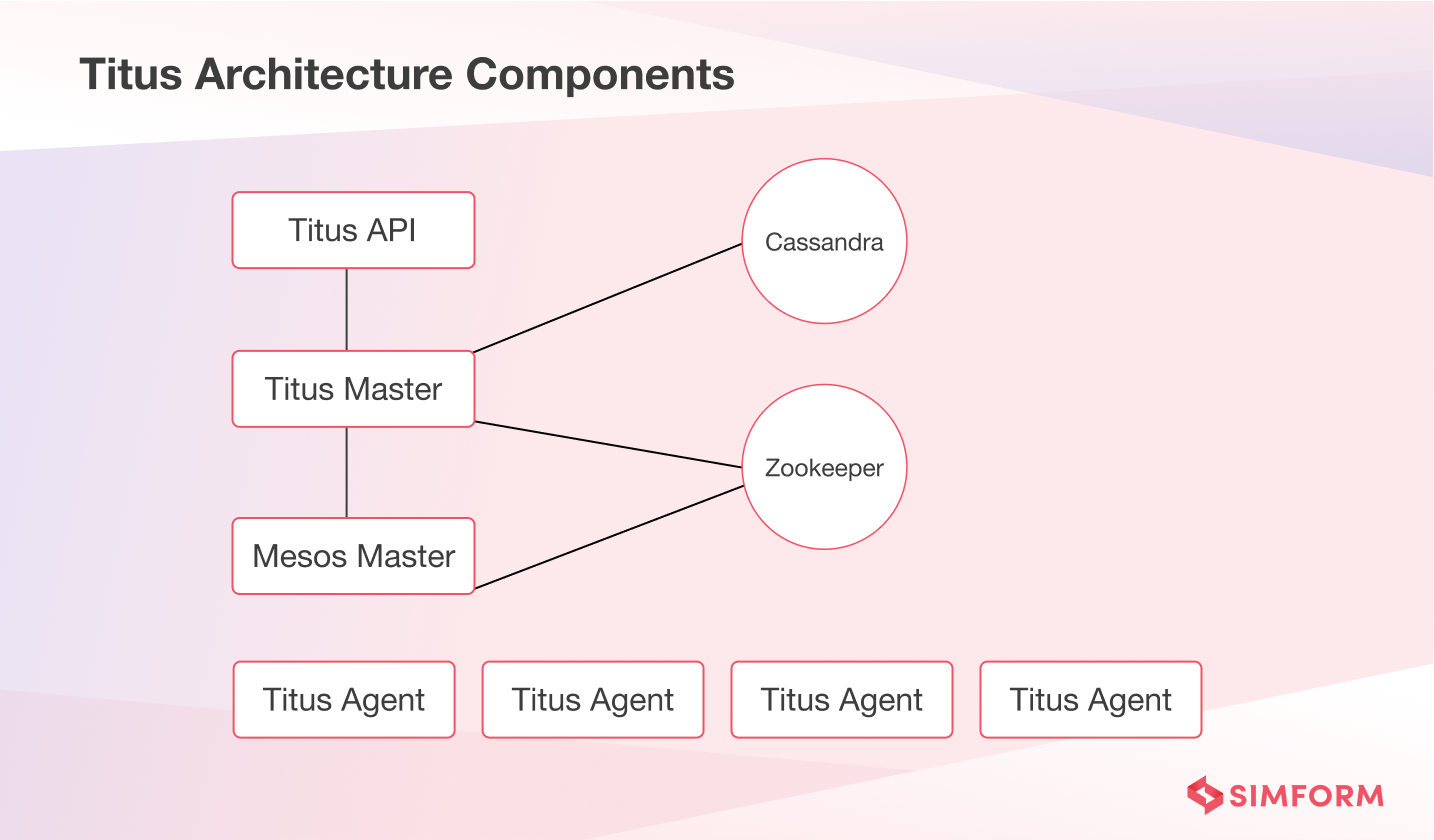
Titus served as a standard deployment unit and a generic batch job scheduling system. It helped Netflix expand support to growing batch use cases.
- Batch users could also put together sophisticated infrastructure quickly and pack larger instances across many workloads efficiently. Batch users could immediately schedule locally developed code for scaled execution on Titus.
- Beyond batch, service users benefited from Titus with simpler resource management and local test environments consistent with production deployment.
- Developers could also push new versions of applications faster than before.
Overall, Titus deployments were done in one or two minutes which took tens of minutes earlier. As a result, both batch and service users could experiment locally, test quickly and deploy with greater confidence than before.
“The theme that underlies all these improvements is developer innovation velocity.”
-Netflix tech blog
This velocity enabled Netflix to deliver fast features to the customers, making containers extremely important for their business.
Netflix invests and experiments significantly in improving development and operations for the engineering teams. But before Netflix adopted the “Operate what you build” model, it had siloed teams. The Ops teams focused on deploy, operate and support parts of the software life cycle. And Developers handed off the code to the ops team for deployment and operation. So each stage in the SDLC was owned by a different person and looked like this:
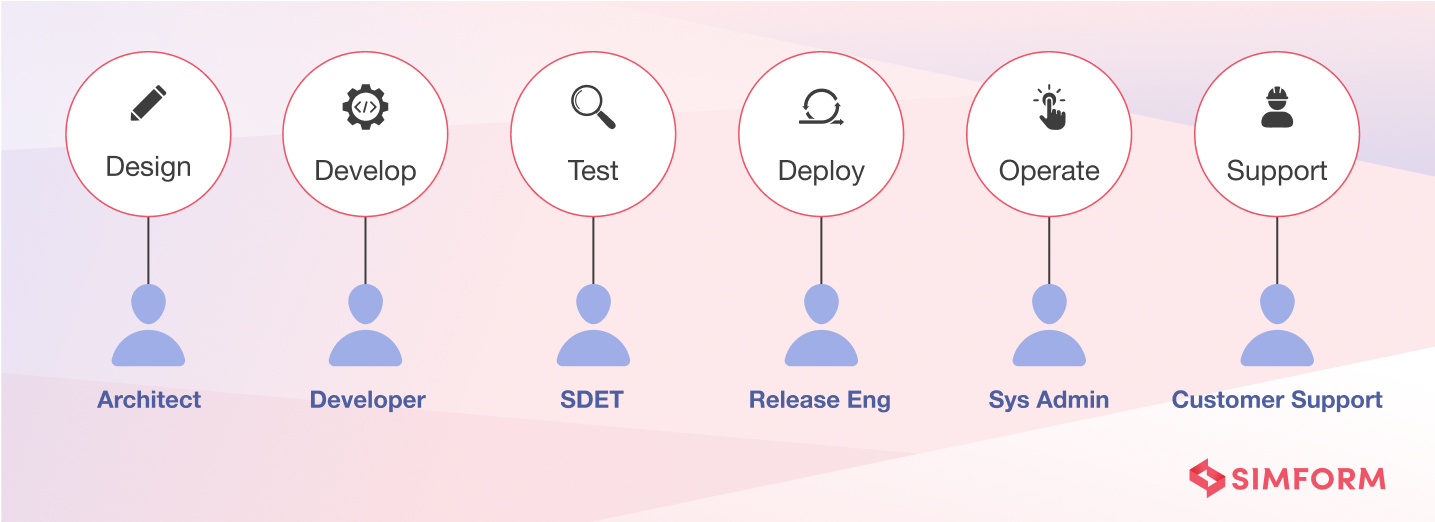
The specialized roles created efficiencies within each segment but created inefficiencies across the entire SDLC. The issues that they faced were:
- Individual silos that slowed down end-to-end progress
- Added communication overhead, bottlenecks and hampered effectiveness of feedback loops
- Knowledge transfers between developers and ops/SREs were lossy
- Higher time-to-detect and time-to-resolve for deployment problems
- Longer gaps between code complete and deployment, with releases taking weeks
Operate what you build
To deal with the above challenges and drawing inspiration from DevOps principles, Netflix encouraged shared ownership of the full SDLC and broke down silos. The teams developing a system were responsible for operating and supporting it. Each team owned its own deployment issues, performance bugs, alerting gaps, capacity planning, partner support, and so on.
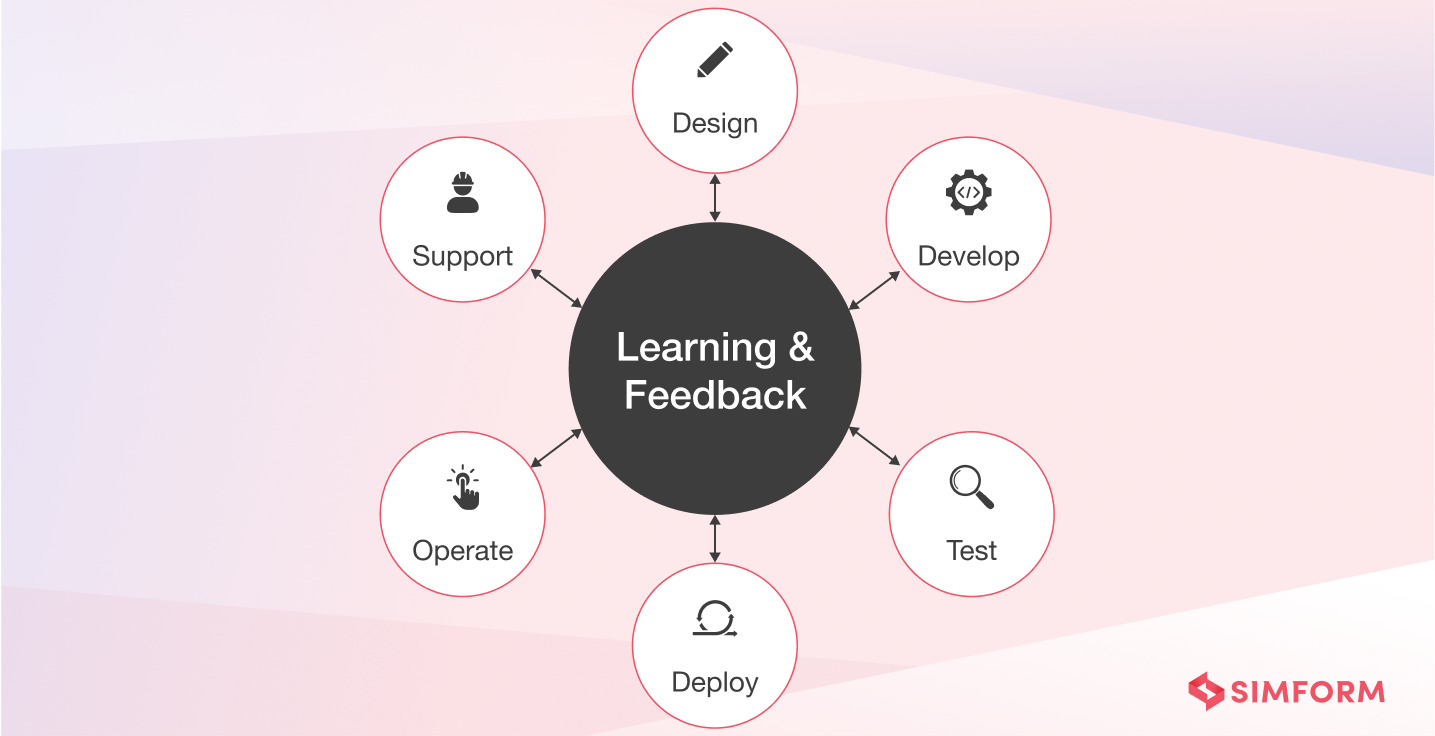
Moreover, they also introduced centralized tooling to simplify and automate dealing with common development problems of the teams. When additional tooling needs arise, the central team assesses if the needs are common across multiple development teams and built tools. In case of too team-specific problems, the development team decides if their need is important enough to solve on their own.
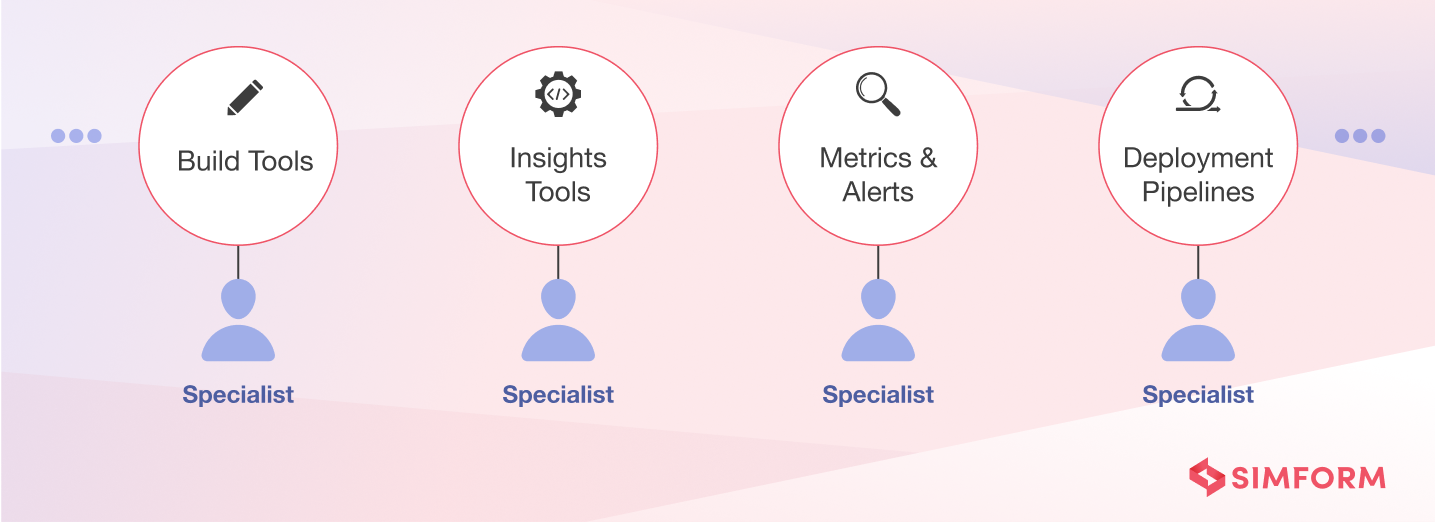
Full Cycle Developers
Combining the above ideas, Netflix built an even better model where dev teams are equipped with amazing productivity tools and are responsible for the entire SDLC, as shown below.
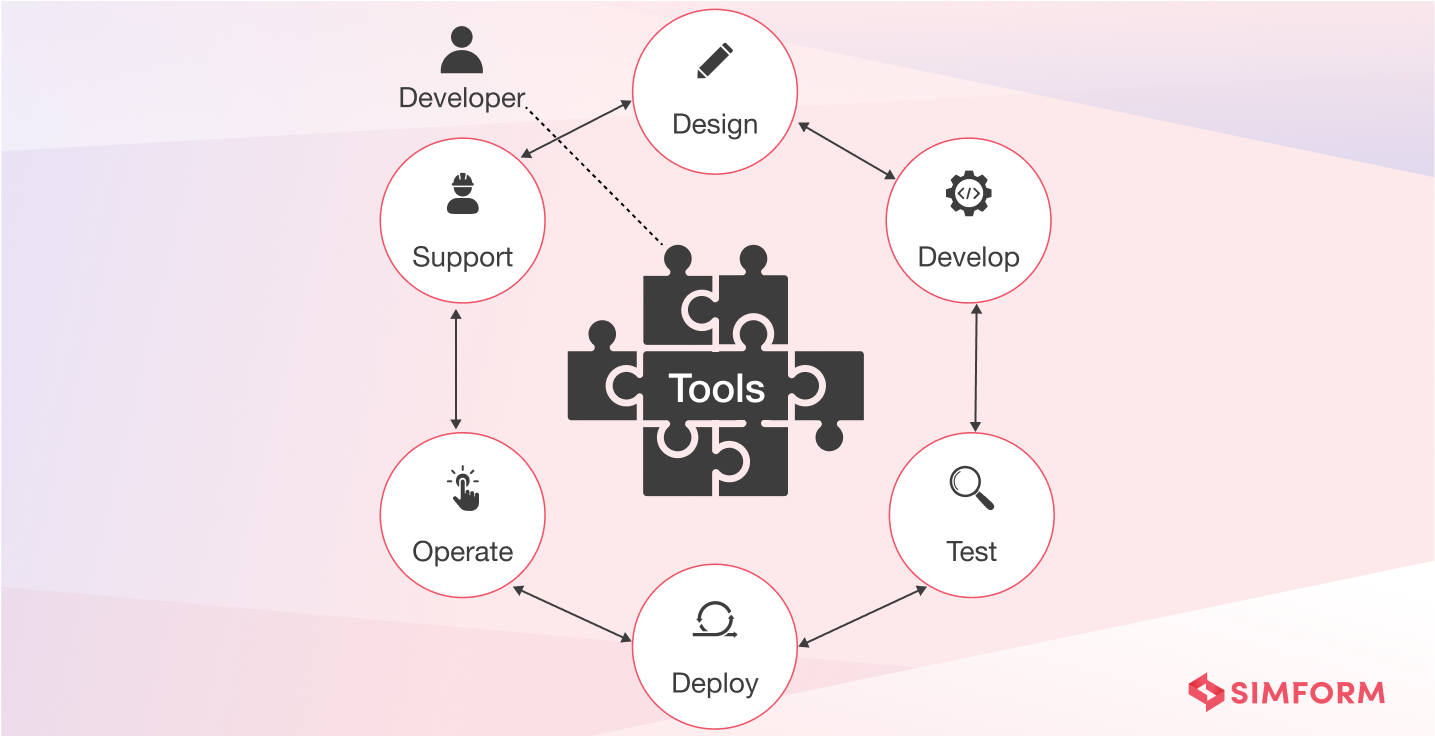
Netflix provided ongoing training and support in different forms (e.g., dev boot camps) to help new developers build up these skills. Easy-to-use tools for deployment pipelines also helped the developers, e.g., Spinnaker. It is a Continuous Delivery platform for releasing software changes with high velocity and confidence.
However, such models require a significant shift in the mindsets of teams/developers. To apply this model outside Netflix, you can start with evaluating what you need, count costs, and be mindful of bringing in the least amount of complexities necessary. And then attempt a mindset shift.
Netflix practices are unique to their work environment and needs and might not suit all organizations. But here are a few lessons to learn from their DevOps strategy and apply:
- Don’t build systems that say no to your developers
Netflix has no push schedules, push windows, or crucibles that developers must go through to push their code into production. Instead, every engineer at Netflix has full access to the production environment. And there are neither strict policies nor procedures that prevent them from accessing the production environment.
- Focus on giving freedom and responsibility to the engineers
Netflix aims to hire intelligent people and provide them with the freedom to solve problems in their own way that they see as best. So it doesn’t have to create artificial constraints and guardrails to predict what their developers need to do. But instead, hire people who can develop a balance of freedom and responsibility.
- Don’t think about uptime at all costs
Netflix servers their millions of users with a near-perfect uptime. But it didn’t think about uptime when they started chaos testing their environment to deal with unexpected failure.
- Prize the velocity of innovation
Netflix wants its engineers to do fun, exciting things and develop new features to delight its customers with reduced time-to-market.
- Eliminate a lot of processes and procedures
They limit an organization from moving fast. So instead, Netflix focuses on hiring people they can trust and have independent decision-making capabilities.
- Practice context over control
Netflix doesn’t control and contain too much. What they do focus on is context. Managers at Netflix ensure that their teams have a quality and constant flow of context of the business, rather than controlling them.
- Don’t do a lot of required standards, but focus on enablement
Teams at Netflix can work with their choice of programming languages, libraries, frameworks, or IDEs as they see best. In addition, they don’t have to go through any research or approval processes to rewrite a portion of the system.
- Don’t do silos, walls, and fences
Netflix teams know where they fit in the ecosystem, their workings with other teams, dependents, and dependencies. There are no operational fences over which developers can throw the code for production.
- Adopt “you build it, you run it” culture
Netflix focuses on making ownership easy. So it has the “operate what you build” culture but with the enablement idea that we learned about earlier.
- Focus on data
Netflix is a data-driven, decision-driven company. It doesn’t do guesses or fall victim to gut instincts and traditional thinking. It invests in algorithms and systems that combs enormous amounts of data quickly and notify when there’s an issue.
- Always put customer satisfaction first
The end goal of DevOps is to make customer-driven and focus on enhancing the user experience with every release.
- Don’t do DevOps, but focus on the culture
At Netflix, DevOps emerged as the wonderful result of their healthy culture, thinking and practices.
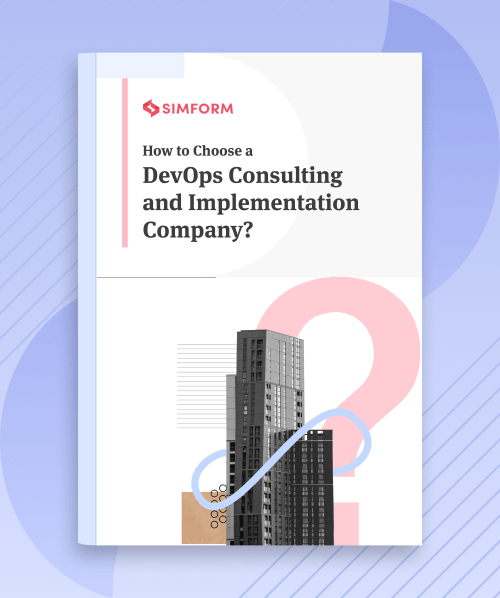
Get in Touch
Netflix has been a gold standard in the DevOps world for years, but copy-pasting their culture might not work for every organization. DevOps is a mindset that requires molding your processes and organizational structure to continuously improve the software quality and increase your business value. DevOps can be approached through many practices such as automation, continuous integration, delivery, deployment, continuous testing, monitoring, and more.
At Simform, our engineering teams will help you streamline the delivery and deployment pipelines with the right DevOps toolchain and skills. Our DevOps managed services will help accelerate the product life cycle, innovate faster and achieve maximum business efficiency by delivering high-quality software with reduced time-to-market.
Hiren Dhaduk
Hiren is CTO at Simform with an extensive experience in helping enterprises and startups streamline their business performance through data-driven innovation.
Cancel reply
Your email address will not be published. Required fields are marked *
Your comment here*
Sign up for the free Newsletter
For exclusive strategies not found on the blog
Sign up today!
Related Posts
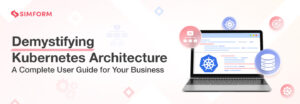
Kubernetes Architecture and Components with Diagram
11 Powerful Docker Alternatives to Revolutionize Containerization in 2024
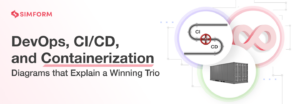
DevOps, CI/CD and Containerization: 44 Images Explaining a Winning Trio
Get insights on Gen AI adoption and implementation in 2024. Download the survey report now!
Please rotate your device
Netflix case study, inspiration feature.
Spend less time browsing and more time watching
Introduction
- Interface Design
- Future Scope
- Roles & Responsibilities
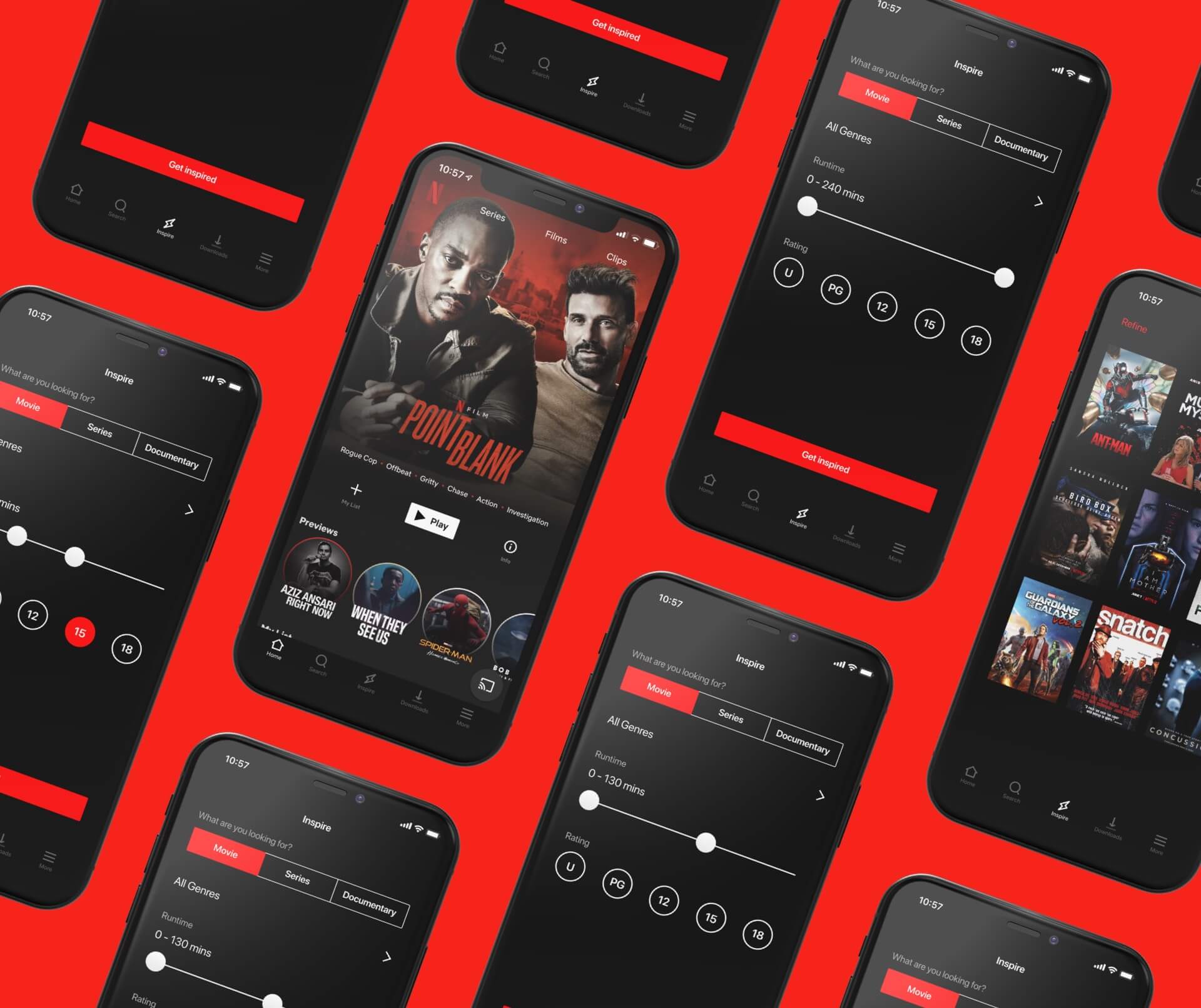
This is not a real project and we have not worked with Netflix in any official capacity.
Imagine sitting down after a hard days work, wanting to find something new to watch but instead you've found yourself browsing an endless library of thumbnails for over 10 minutes.
You read the odd description, watch the odd preview but it's maybe not the right genre, or you don't have 3 hours to sit through a film. You are stumped.
This sounds familiar doesn't it?
What we wanted to achieve, was an easy to access feature within the app that felt native to the Netflix ecosystem, was quick to use and helped people find something to watch quicker.
We designed an icon that compliments the current set of Netflix assets, striking and obvious. New, yet familiar.
User Interface
The UI of the Inspire feature leans on the existing elements of the Netflix user interface.
We used a segmented control as a way of progressively disclosing further options to refine the search. These controls are an easy way to choose between a movie, a series or a documentary before refining.
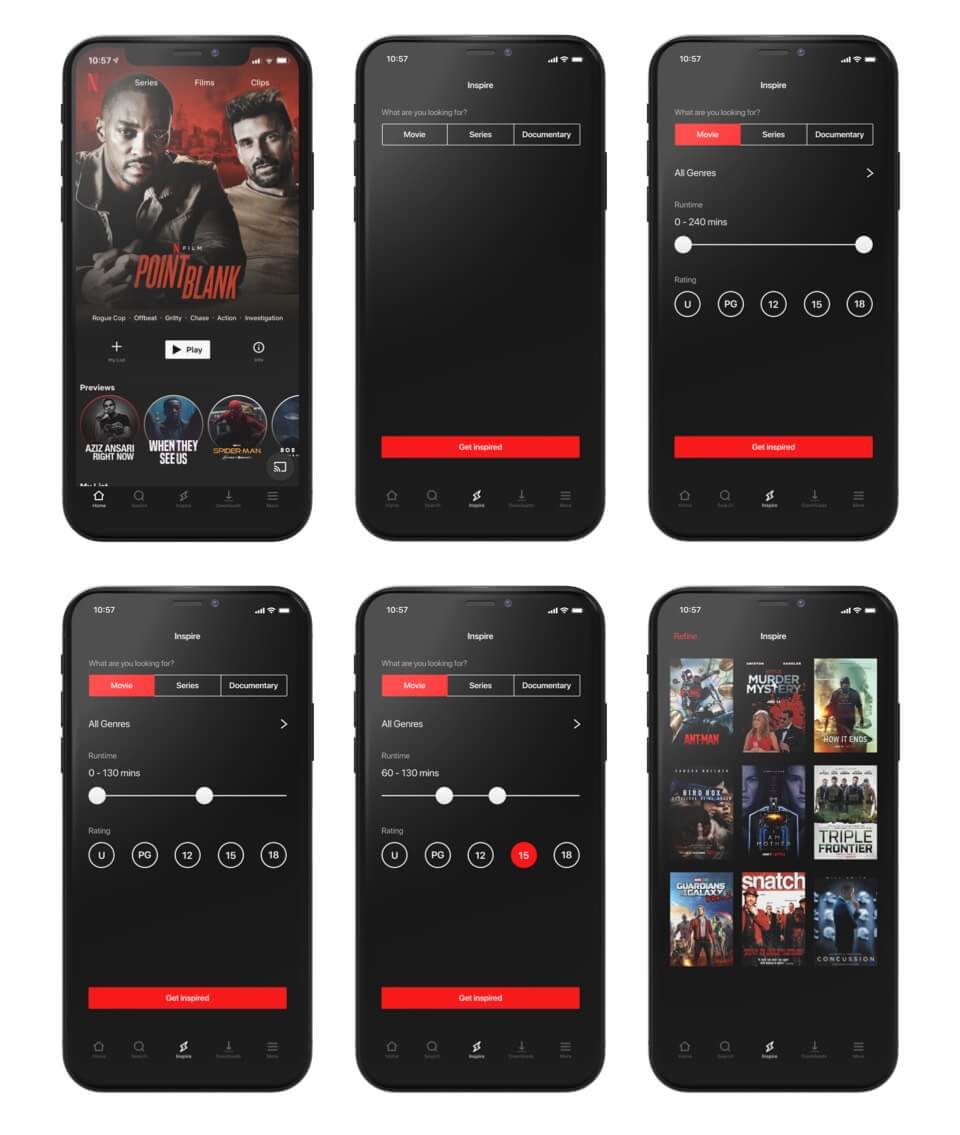
The idea for this concept came from two particular frustrations whilst using Netflix.
Struggling to find media of a certain run time
As a result losing time endlessly browsing
The result of these issues generally led to not watching anything at all so with this concept we wanted to change that. The current Netflix search function is a simple text entry system, with this you already need to know what you're looking for or who you want to watch.
The Inspire feature at the most basic level is simply an advanced search, with fields that target the above pain points and get users to media they want to watch quicker.
It is a small feature that offers a very positive impact.
Future enhancements
This concept could be built out to include features such as a Netflix Originals checkbox. We may also take a look in future as to how this solution could work across the entire Netflix ecosystem.
We can help you to do more with digital
Your targets are our targets. We approach every project with empathy, creative thinking and a focus on user experience.
- Find out more
We shared a presentation of the prototype on various social media platforms.
We were not surprised that the feedback reflected our own experiences of using Netflix. Whilst we focused our efforts in this occasion on the Netflix app, these ideas could be applied to most streaming services.
As this was a conceptual RAD project, we took care of the journey mapping, investigation, creative thinking, user interface design and prototyping. Ideas based on experience.
This case study is an example of the work RAD can do by alleviating pain points by implementing small, non-disruptive, changes to the UI to make a big difference in the UX.
We don't need to design projects from the ground up, we can improve products without impacting on existing brand guidelines or design systems.
Get in touch to find out more about our design process.
- 07702 478 940
- [email protected]
- SUGGESTED TOPICS
- The Magazine
- Newsletters
- Managing Yourself
- Managing Teams
- Work-life Balance
- The Big Idea
- Data & Visuals
- Reading Lists
- Case Selections
- HBR Learning
- Topic Feeds
- Account Settings
- Email Preferences
Share Podcast

What’s Behind the Success of Some Tech Start-Ups?
Their corporate culture often focuses on unconventional solutions to hard business problems.
- Apple Podcasts
The secret to success for many Silicon Valley tech companies isn’t necessarily that they’re ultra-nimble start-ups, or that they’re led by tech-savvy geniuses. Andy McAfee says their success often has more to do with a specific type of corporate culture that focuses on finding unconventional solutions to hard business problems.
McAfee is a principal research scientist at the MIT Sloan School of Management, and he’s the author of The Geek Way: The Radical Mindset That Drives Extraordinary Results .
In this episode, he explains why business leaders need to think more like geeks and explains why it’s important to center your culture on company norms, rather than organizational structure. He also offers tips for finding that delicate balance between human judgement and data-driven insights.
Key episode topics include: strategy, technology, start-ups, innovation, competitive strategy, Silicon Valley.
HBR On Strategy curates the best case studies and conversations with the world’s top business and management experts, to help you unlock new ways of doing business. New episodes every week.
- Watch the original HBR New World of Work episode: How the Geeks Rewrote the Rules of Management (2023)
- Find more episodes of the New World of Work series on YouTube
- Discover 100 years of Harvard Business Review articles, case studies, podcasts, and more at HBR.org .
HANNAH BATES: Welcome to HBR On Strategy , case studies and conversations with the world’s top business and management experts, hand-selected to help you unlock new ways of doing business.
You might think that t he secret to success for many Silicon Valley tech companies is that they’re ultra-nimble start-ups, or they’re led by tech-savvy geniuses.
But Andy McAfee, a principal research scientist at the MIT Sloan School of Management, corporate culture. One that is all about finding unconventional solutions to hard business problems.
McAfee outlines the pros and cons of that approach to management in his book, The Geek Way: The Radical Mindset that Drives Extraordinary Results .
In this episode, you’ll learn why it’s important to center your company culture on norms rather than organizational structure.
McAfee also explains how to build an organization that can get things right even when the person at the top is wrong. And he has tips for finding that delicate balance between human judgement and data-driven insights.
This episode originally aired as part of HBR’s New World of Work video series in September 2023. Here it is.
ADI IGNATIUS: Welcome to Harvard Business Review’s The New World of Work. I’m Adi Ignatius, Editor in Chief of HBR. Each week on the show, I interview a CEO, a thought leader, or somebody to inspire us, to educate us on the changing dynamics of the workplace.
Our viewers come from all over the world. And they work at everything from Fortune 500 corporations to fledgling startups, from family businesses to nonprofits. The aim of this show is to give insights for everyone as they navigate this transitional moment in how we organize ourselves in the business world.
So, on tonight’s episode, we have another great guest, Andrew McAfee, a Principal Research Scientist at the MIT Sloan School of Management. His research focuses on how information technology changes how companies perform, how they organize themselves, and how they compete.
He’s a frequent contributor to HBR and is the author of the forthcoming book, The Geek Way, the Radical Mindset that Drives Extraordinary Results. The book is out in mid November. But you can pre-order it now wherever you pre-order your books. So, Andy, welcome.
ANDREW MCAFEE: Adi, it’s great to be here. Thank you.
ADI IGNATIUS: Yeah, it’s great to have you. It’s exciting about the book. So, I’ve read the book. It is a great read. It lavishes fulsome praise on geeks and business, not just for their technological innovation, but also for developing an approach to business itself that you’ve come to respect.
So there’s a lot to talk about. Let’s start with definitions. So how do you define a geek?
ANDREW MCAFEE: Yeah, so I’m walking away from the computer-based definition of a geek, which was kind of where it started. And my definition is two-part. For me, a geek is somebody who gets obsessed with a hard problem and is willing to embrace unconventional solutions.
And for me, the patron saint of geeks is probably Maria Montessori, who about 100 years ago, got obsessed with the problem of, how do you educate young children best and came up with the Montessori educational method, which is this radical departure from industrial-scale model of schools that was dominant then and, sadly, still dominant now. So, think about Maria Montessori when you think about a geek.
ADI IGNATIUS: So, there’s a definition. Then, how do you define the Geek Way that you’re talking about in the book? What is the Geek Way?
ANDREW MCAFEE: So, the particular geeks that I got excited about that led me to write the book were not educational geeks like Maria Montessori. They were business geeks. They were a group of people, concentrated but not exclusive to the West Coast of the US, who got obsessed with this problem of, how do we run a company in an age of really fast technological change and lots of uncertainty?
And in particular, how do we avoid some of the classic dysfunctions of the internet era? And the Geek Way is what they’ve come up with. It’s the business model or the culture or the set of norms that they’ve settled on to try to accomplish that really hard goal.
ADI IGNATIUS: So, if you’re watching this if you have questions yourself for Andy McAfee, put them in the chat. We’ll get to as many audience questions later as possible.
So really, the way you’re defining geeks, the way you’re defining Geek Way, I mean, it seems to be– I’m trying to think of other terms that we might have used, other coinages. Lifelong learner, but that’s not quite it. It’s people who nerd out on, in this case, management, right?
ANDREW MCAFEE: Obsessive maverick is my preferred phrase for a geek. And the obsessive mavericks that I got really interested in were the ones who dove. In again on this problem of how do we run a company, and keep doing well in our markets, and avoid the dysfunctions that seem to plague so many successful companies as they get older and bigger?
How do we avoid those dysfunctions? How do we do something that’s higher performing, more sustainable, and a better place to work?
ADI IGNATIUS: So, as I read the book, some of those attributes you talked about, they had to do
with speed. They had to do with experimentation. Is this just another term for being digital or for applying design thinking in the business? Is that– are we talking the same thing here?
ANDREW MCAFEE: No, I don’t think. You remember Quibi, right? The Jeffrey-Katzenberg-led video startup– it was going to do short form videos and was going to change the way we consume entertainment. It was going to be entirely digital. It was a completely digital enterprise. It was a miserable failure. They raised $1.75 billion.
They shut down within 200 days of their launch. It was just a catastrophe. It was a completely digital enterprise. Netflix is a geek company. They follow all four of my great geek norms of science, ownership, speed, and openness. And I think the results speak for themselves.
So geek for me is entirely separate from digital. You can be a non-m digital geek. And you can certainly be very digital and not geeky at all.
ADI IGNATIUS: When I meant digital, I meant more of a mindset than a product. So it sounds like– so the Quibi thing is an interesting example. I guess what was missing in terms of from your framework was the openness, right? I mean that you had a powerful guy who had been successful, Katzenstein, who wasn’t listening to–
ANDREW MCAFEE: Evidence, to his peers, to his colleagues, to his advisors– he didn’t appear to be a great listener, which is this kind of archetypal, stereotypical trap that a lot of industrial-era companies fall into. And tech leaders also fall into this trap quite often. You become enamored of your own success and you really stop listening.
It’s incredibly common. And one of the things that I really think is powerful and respect about people like Reed Hastings at Netflix is he was able to build a business that got important decisions right when he, himself was wrong about them. And in the book, I talk about a couple of them. He was dead flat wrong about the utility of downloading to the Netflix app.
He thought it wouldn’t be very useful at all. It’s incredibly useful. He was wrong about the importance of kids programming for Netflix. And he admits this in the book No Rules Rules that he wrote with Erin Meyer. But he successfully worked hard on building a company that would correct him, the boss, the high-status, prestigious person at the top of the organization.
It’s part of this great geek norm of openness that I talk about, how do you build a company that will get it right when the person at the top of the org chart is wrong? Man, that’s a hard problem.
ADI IGNATIUS: It’s a hard problem. And I’m sure some people are going to read your book and think, hang on, a lot of these companies we’re talking about are– not exclusively– but are Silicon Valley startups or somewhere in that realm. The popular perception, I would say, is these are not cultures that you necessarily want to emulate, that they’re often male-dominated bro cultures that you may have the boss– frequently, in these cases, is a kind of overly-demanding bully individual.
So how do you how do you square all this?
ANDREW MCAFEE: And there clearly is some of that going on in the Valley, right? There are toxic cultures. You mentioned the bro culture. I would say that Theranos is one of the most toxic cultures I’ve ever heard about, was headquartered in Silicon Valley. So, I don’t think those are geek companies at all.
They might be in the right geographic location. But they’re not following the Geek Way, which is, again, about these norms and about creating a culture that is fast-moving, free-flowing, argumentative, autonomous, evidence-driven and pretty egalitarian. That’s the goal of the Geek Way.
Now, you point out some of these companies that I do think follow the Geek Way are still too pale, stale, and male. And I think that’s absolutely true. The evidence is pretty clear on this. I hope that gets better over time. But you said something that I disagree with is that a lot of these cultures, that they’re not good places to work.
That’s true in some cases. You remember when LinkedIn did its top attractors survey, I believe, in 2016. They said, look, we’re just going to look at objective criteria. We’re going to look at which company pages get viewed the most often by LinkedIn members, which companies get the most interest from LinkedIn members, the most applications, and where do people stick around when they take their first job?
The top 11 attractors in the LinkedIn list were all companies headquartered on the West Coast
in the industry that we loosely call tech. The geek culture is an extremely attractive culture to work in.
ADI IGNATIUS: So again, if you have questions– if viewers have questions for Andy, please put them into the chat. I’ll get to them later. So, one thing I’ve always wondered is some of these, let’s say, founders, entrepreneurs who got into whatever they got into because they wanted to make the world a better place.
And Sergey and Larry in their garage trying to systematize our access to all the world’s information, these sort of great ideals– when they are actually running companies, they not only are trying to run a company great. They become killers, wanting to wipe out the competition, to foster monopolistic practices, to just grab up as much market share as possible.
ANDREW MCAFEE: Is any of this new? No, I’m serious. Were the businesses of previous eras cuddly? Did they want their competitors to succeed? Were they trying to rise all boats? I don’t need to tell you that capitalism is an inherently competitive process. These companies are very, very good performers.
If you want to use the adjective “killer” for them, yeah, I think that’s by design. You’re not in business not to succeed. You want to grow your market share. You want to grow your profits. You want you want to grow. That is often at the expense of somebody else.
I think it’s for the courts to decide whether they meet the definition of monopolist. It’s a word we toss around a lot. I think the courts so far have tossed out a lot of the recent lawsuits against some of these giant tech companies. I don’t think they meet the definition of “monopolist.”
I think, in general, for a lot of these companies, the competition is one click away. And is Tesla a monopolist in the auto industry? You simply can’t make that case. SpaceX has become pretty close to a monopolist in the rockets and satellites industry.
But they didn’t start that way. And they’ve become so large and influential because they do the job better.
ADI IGNATIUS: All right. So, let’s talk about companies that are doing it right. As you say, this is not this is not universally. For digital companies, some follow the Geek Way, as you’ve laid it out. Some don’t. You mentioned a couple. Or maybe a different question is, how many companies– large, small, digital, otherwise– live into these principles, do you think?
ANDREW MCAFEE: I think that’s a really interesting question. And I don’t have a great way to answer it yet because the only way that I can think to answer it is to administer a survey to everybody and get them to fill it out. But that’s just not going to work. They’re not going to fill out that survey.
ADI IGNATIUS: Well, roughly.
ANDREW MCAFEE: But you can look at what we know about the cultures at these companies. You can also look at the fantastic culture 500 research that Don and Charlie Sull did published in a competitor magazine of yours, Sloan Management Review, where they grabbed all of the LinkedIn reviews and they put them through a machine learning analysis to see what companies’ own employees said about them.
And the three areas that I was most interested in were execution, agility, and innovation. And wow, the scores for companies clustered on the West Coast, clustered in Silicon Valley, clustered in industries that we call “high tech,” those scores are off the charts. There’s not any real competition for them.
So there’s something brewing on the West Coast in industries that we label “high tech” for reasons that I don’t very much. There’s something brewing that’s new, that is different than what’s going on elsewhere in the economy, and that’s pretty demonstrably powerful. The label that I hang on that is the Geek Way.
ADI IGNATIUS: So, was Steve Jobs a geek? And did his Apple follow the Geek Way? Or was that a different model?
ANDREW MCAFEE: And Jobs has some really classic non-geek characteristics. He believed that he knew best right. He had a very, very large ego. He also screamed at his subordinates all the time, which I think is absolutely not what an open leader does. However, I interviewed Eric Schmidt for the book.
And I brought this up to him. And he said, look, I was on Apple’s board for a while, I knew Steve pretty well. He said Steve was a tough person in all those ways. But he learned that if you want to stay on top, you have to listen to the people around you. You have to stop thinking that you have all the answers.
We see a really clear example of that with the App Store. And Adi, like you probably remember, Jobs did not want to open up his beautiful, perfect, walled garden iPhone to outside developers. He had to be talked into it. He eventually realized that he was wrong about that. So, there is a little bit of that openness going on.
One thing that Apple is pretty fanatic about, as I understand it, is they make decisions based on evidence. And whether or not that’s a A/B testing infrastructure is one thing. Apple loves to demo features and gets everybody in the room to look at this and say, for example, is it better to have blurry portrait photos where you can adjust the blur before you take the picture?
The instant they did a demo, they had the answer to that question. They did not sit around and argue from their different points of view. They said, OK, let’s run an experiment. Let’s do a demo here. That’s an extremely geeky approach.
ADI IGNATIUS: I mean, one of the interesting things about Jobs, and certainly something he would say about– he would have said about himself, he did say about himself– was that he didn’t and that one shouldn’t slavishly follow the focus groups, that people don’t know what they want.
So in a sense, yeah, the data, but not necessarily and a combination of, let’s get input. But there is a lot of personal touch, personal feel. It’s like it’s sort of like Moneyball versus the old school. And maybe the answer is a combination of skills.
ANDREW MCAFEE: Absolutely. And Ted Sarandos, who’s the co-CEO of Netflix says, our decision making is pretty algorithmic. It’s 70%/30% algorithmic versus human judgment. But he said, if anything the human judgment is on top, if that makes any sense.
And I think that makes a ton of sense because this norm of science that I talk about in the book, and that the geeks are pretty passionate about, it’s not just dry analysis and do whatever the data says. That’s an inaccurate caricature. Science is about settling arguments with evidence. It’s a ground rune for how you’re going to come to a decision.
You’re going to do a test. You’re going to do an experiment. You’re going to sit around in a group and argue about it. And if you can’t agree, what evidence is going to settle this issue? Science is this inherently deeply social, deeply argumentative process with a ground rule.
Evidence is the queen here. And that’s what we’re going to follow. And a lot of the geek companies that I respect do that as naturally as breathing.
ADI IGNATIUS: So one of the examples in your book of geek culture triumphing is Microsoft,
and specifically when Satya Nadella came in to and kind of rekindle that early success and more. Talk a little bit about what he got right, particularly in the framework that–
ANDREW MCAFEE: Adi, can you think of a more impressive corporate turnaround story in living memory?
ADI IGNATIUS: No. Microsoft went from the tech company we liked least to maybe the one we like best.
ANDREW MCAFEE: And if you were an investor, you really didn’t like it for about a decade. The stock price was flat as a corpse’s EKG. And then, Nadella took over. And it’s become one of the most valuable companies in the world. It’s an astonishing comeback story. So, I got to interview Nadella for the book.
And he made brilliant strategic moves, a bunch of them– Microsoft embracing open source, wow. But I was interested in the cultural changes that he made. And he did a couple of things that I think are straight out of the geek playbook. Some of them are obvious. He embraced agile development methods as widely and quickly as possible inside Microsoft.
He did a couple things to reduce the sclerotic bureaucracy that was in place at Microsoft, which was just hamstringing their ability to do anything important out there in the world. One of the brilliant things he did was say, look, you cannot own a digital resource inside Microsoft. You cannot own the data. You cannot own the code.
And what he meant by that was, you can’t be the gatekeeper. You can’t say yes or no to other groups who might want to use it. So, with that one simple move, he said to the company, look, if the group wants to go grab all of the GitHub code to train up a model to help to provide assistance to programmers, you don’t have to ask permission.
Just go do that, subject to all the right constraints and safeties on it. Man, that is an astonishingly good bureaucracy-reduction mechanism. I think maybe the deepest thing that Nadella did, though, was he pulled off this amazing feat of helping Microsoft become a less defensive organization.
And what I mean by that was he says in the book and he said in his interview with me, we had a culture where it was not OK to be wrong to show any weakness, to not hit your numbers, to not be the smartest person in the room. He said, we just had that culture. And it had to change.
And so he did a number of really brilliant things to move from a culture of defensiveness to a culture of openness. And when I used to hear this word vulnerability in connection with leadership or business, I thought it was just the most kind of buzz phrase, hand-wavy nonsense business.
The company is not a therapy group. It’s not there so you can sit around feeling vulnerable all the time. I was just wrong. Now, the company is not your therapy group. However, a company is a place– a successful company needs to be a place where it’s OK to be wrong, to fail, to not have the answer, to show that you’re uncertain.
And Nadella helped get Microsoft down that path. And it was an absolutely fundamental thing to do. I also interviewed Yamini Rangan, who’s the CEO of HubSpot here in Cambridge, who took over a culture that had an amazing culture and has strengthened it through a really difficult time, through the pandemic.
And she said one of the things that she learned and that she was good at was saying in this unbelievably uncertain time of the pandemic, where tech companies were growing like crazy, and then they were shrinking, and it was all weird, she said to a lot of her constituencies, look, I don’t know.
I don’t know what the future holds here. I’m going to be honest with you. She also shared her board performance review with her direct reports– not just the good parts, but the stuff that she needs to work on too. These are all just great moves to start to show the rest of the organization, it is OK not to be perfect, not to put on the brave front, not to be winning all of the time.
Adi, Jack Welch’s autobiography was called Winning. And it was just kind of epitomized this industrial-era view of what you have to do all day, every day. I love the geek view, which is, hey, man, we’re going to launch some rockets. And they are going to blow up.
Now, we’re not going to kill anybody. But we’re absolutely going to launch some rockets that are going to blow up on the launch pad. Bezos said a few years back in a shareholders letter, we are incubating multibillion dollar failures inside Amazon right now.
That’s appropriate for a company of our scale. And you look at Alexa, and I think maybe he was right about that. But the point is, this obsession with winning, and being on top, and being right, and being dominant– that has to go away
ADI IGNATIUS: Those are great examples. I do want to get to audience questions. And there’s actually a couple. One came from Shabana in Pakistan, the other from [INAUDIBLE] in India. Similar questions, and it’s really getting at what kinds of organizational design, organizational structures do you need to foster this geek culture?
ANDREW MCAFEE: I don’t think org structure is the key because the companies that I surveyed have very, very different org charts. They also have very different formal practices. Netflix is fairly famous for having the no-vacation-days policy. Amazon has extremely strict vacation policies for different levels of employee.
So, I think it’s not a matter of the org chart or the org structure that you have. It’s not so much a matter of how formal a lot of your policies are. It’s a matter of your norms. And I love that book. And Adi, like you know, I use it– I love that word. And I use it in the book all the time.
A norm is a behavior that the people around you expect. Maybe it’s written down in the employees’ manual. Very often, it’s not. It’s community policing. It’s what the people around you expect. And if you go out of line and you violate a norm in a community, you will know that fairly quickly.
And you will either come back into line. Or you’re just not going to stick around very long. So, for me, if you can work on these norms of science, argue about evidence, of ownership, push authority and decision making down to an uncomfortable degree. Speed, iterate, don’t plan, don’t analyze, build stuff, get feedback, learn from reality.
And then, openness, don’t be defensive. Be willing to pivot. Be willing to admit that you’re wrong. They show a little vulnerability. Those are the norms that are critical for the Geek Way.
ADI IGNATIUS: So, I think our audience is impressed with you and with your argument. Maybe it’s the glasses. But we have a question.
ANDREW MCAFEE: It’s probably the glasses.
ADI IGNATIUS: It’s probably the glasses. It’s always the glasses. Bob, if you had an English accent, it would blow it away.
ANDREW MCAFEE: Damn. I need a posh British accent, don’t I?
ADI IGNATIUS: So, Bob Jernaki is asking, is the stack of books on your right your reading list for the week?
ANDREW MCAFEE: So, these are from all over the place. But there was a stack of books that I kept referring to when I was writing The Geek Way. And they were not business books. I’m sorry to admit this as a business book writer. They were books from this relatively new field called “cultural evolution,” which gets at this fundamental question, why are we the only species on the planet that builds spaceships?
Nothing else is even close. We’re really the only ones out there. The octopuses are not going to do it. The ants, the bees, the chimpanzees are not going to do it. Why are we humans, the only spaceship-building species on the planet? And this field of cultural evolution, to me, has come up with the best answer to that question.
Which is, we are the only species that cooperates intensely with large numbers of people that we’re not related to. And we are the species that learns the quickest, that improves its tool kit, its technologies, its cultures most rapidly over time. Now, you can take that. And man, you can put that to work in a company.
A company is a large group of mostly unrelated people. And the goal of a company is to improve its culture, its artifacts, its technologies, its practices over time. So the goal of a company is to practice very rapid cultural evolution. Now that we a bit about how cultural evolution happens, we can put those insights to work.
And I think there’s this massive unexplored opportunity to take the insights from this field and put them to work inside the company. I think it’s so massive because I haven’t heard anybody talk using cultural evolution’s terms inside even very geeky companies. This is very, very new stuff. And I think The Geek Way, I think my book is the first applied business book of cultural evolution.
ADI IGNATIUS: I think I just figured something out. You’re a total geek.
ANDREW MCAFEE: Adi, we’ve been working together for years. It took you this long to realize this? But the thing that I got obsessed with was in my career, I’ve spent a lot of time in the– I hate these labels– the old economy and the new economy, lots of industrial-era incumbents and then a lot of companies clustered in the tech space, clustered on the West Coast.
And for my whole career, I have just been trying to pattern match and figure out what the real what the deep differences are between the two. Is it the foosball tables? Is it the hoodies? Is it bring your dog to work? No, obviously not. Where the action is in the economy, where the excitement is in the economy, what are they doing differently?
And The Geek Way contains my answers to that kind of career-long, geeky, head-scratching question.
ADI IGNATIUS: So, let’s get practical now for our viewers and HBR, I hope, stands for practical, useful, suggestions and inspiration. So, for our viewers who aren’t in classically geeky, say, startup culture or something, how can they apply the approaches that you’re championing at their own companies?
ANDREW MCAFEE: Here are a few things you can start doing tomorrow that are extremely geeky practices. And I think they will get some traction. When you’re in charge of your group or you’re a team member or you’re leading a team, if you say things like, that’s a good point.
I hadn’t thought of that, let’s go that way or I was wrong about, that that’s really good to know. You have just demonstrated openness and vulnerability instead of classic defensiveness. Now, that’s hard to do. We human beings are inherently defensive people.
We don’t like being shown to be wrong in public. It’s deeply uncomfortable. But if you model that behavior, it will start to spread. And I’ve seen geek leaders do that over and over. You can start to push decisions and responsibility down to a place that makes you uncomfortable and to get out of the, let me just run that by me first or, make sure I’m included on that– to try to get rid of the hard and soft bureaucracy that gets in the way.
I was talking to Sebastian Thrun, who’s an alpha geek and all kinds of things. And he said, one of the things I try to get my teams to do is to stop so much communicating. And he had this great image. He said, a team works on something. And then, they kind of run it up the flagpole.
And he said, the really natural tendency is for the people at every layer of the org chart to add something to that because they want to be part of the solution. They want to be part of this winning idea. And he said, by the time that idea gets back down to the originating team, it’s kind of unrecognizable.
Get out of that business. Again, this is uncomfortable stuff to do. But it’s a big step toward the Geek Way. And then, finally, you can start to say, well how are we going to make this decision? Can we agree on what evidence we’re going to look at to make this decision?
As opposed to saying, well, I’m the boss, I got it, or I got it right last time, so you should listen to me this time. All these other ways, we have to make decisions– credentials, hierarchy, charisma, excellent PowerPoint, all these things. Get out of that business and start asking for the consensus on how are we going to settle this argument, what evidence are we going to look at?
These are all super geeky practices you can start doing tomorrow.
ADI IGNATIUS: Yeah, that’s great. I should have mentioned before, when you were in praise of Satya Nadella so he was our guest on this show. And if you want to see a really good interview that I did with Satya Nadella, go to YouTube, The New World of Work, HBR interview with Satya Nadella.
ANDREW MCAFEE: Just go listen to Nadella whenever you can. He’s got this wonderful, cheerful demeanor. He’s always got a smile on his face. And the amount of knowledge that he laid on me in one interview was fantastic. You see from the book, Adi, I had this amazing experience of getting to interview a lot of my favorite alpha geeks. And I learned a ton from them. It’s the kind of thing that makes this geek very happy. So, they’re in the book. And I thank them.
ADI IGNATIUS: So, here’s another audience question. This is Laurie from North Carolina. And this is another very practical kind of question. How can organizations get leaders to unlearn the idea– who think that failure is bad? How do you–
ANDREW MCAFEE: I see we’re just about out of time.
ADI IGNATIUS: Nice try.
ANDREW MCAFEE: This is a super hard question. This is a super hard question. And I fall back on something that I learned from Clay Christensen– Adi, you know, the late, great scholar of management and organizations. One of the things Clay taught me is that managers are voracious consumers of theory.
And he said, don’t be afraid to tell them why this needs to change, what the principle, what the framework is. And he said, if you want to get people to change, there’s a kind of a tripod. There are three things you have to do over and over again until you’re absolutely exhausted.
He said, first of all, tell them a vivid story. We humans respond to narratives. Second of all, give them some evidence. Give them some numbers to show that it works. And then, third, give them a theory explain. Why it works. And you’ve just got to go through all three of those legs.
Why can’t we make decisions this way? I’m a pretty smart person. I reached this place on the org chart because of my excellent judgment. What do you mean, we should be relying a lot less on my judgment? Again, three-part answer to that question, keep iterating on it. It is not an easy process.
I think a lot of companies who get interested in what Silicon Valley does differently or might want to embrace the Geek Way are going to find it hard going because a lot of it is unnatural and uncomfortable. Challenging your boss in a meeting in most circumstances is uncomfortable until it becomes a norm, until it becomes what people around you expect.
ADI IGNATIUS: All right, Andy. We’ve run a little bit long, so we’re going to cut you off here. I could talk all day with you about all these topics. And our audience is clearly into it and engaged. So, thank you very much for being on the show.
ANDREW MCAFEE: Adi, always a pleasure. Thank you for having me.
HANNAH BATES: That was Andy McAfee, a principal research scientist at the MIT Sloan School of Management, in conversation with HBR editor in chief Adi Ignatius. He’s the author of the book, The Geek Way: The Radical Mindset that Drives Extraordinary Results .
We’ll be back next Wednesday with another hand-picked conversation about business strategy from Harvard Business Review. If you found this episode helpful, share it with your friends and colleagues, and follow our show on Apple Podcasts, Spotify, or wherever you get your podcasts. While you’re there, be sure to leave us a review.
When you’re ready for more podcasts, articles, case studies, books, and videos with the world’s top business and management experts, you’ll find it all at HBR.org.
This episode was produced by Julia Butler, Scott LaPierre, Anne Saini, and me, Hannah Bates. Video by Elie Honein. Design by Mikahla Dawson, Karen Player, and Kristen Petrillo. Ian Fox is our editor. Special thanks to Kelsey Hanson, Alex Kephart, Amy Poftak, Caitlin Amorin, Maureen Hoch, Nicole Smith, Erica Truxler, Ramsey Khabbaz, Anne Bartholomew, and you – our listener. See you next week.
- Subscribe On:
Latest in this series
This article is about strategy.
- Technology and analytics
- Competitive strategy
Partner Center

IMAGES
VIDEO
COMMENTS
Netflix discovered all of these innovations by using design thinking to empathize again and again with their customers. Meanwhile, Blockbuster stuck to their traditional brick-and-mortar model, making it harder for customers to get what they wanted, when they wanted it. Netflix knew their survival depended on knowing exactly what each and every ...
Read this blog, Design Thinking Case Study, and see how creative design thinking can boost organisations and gain valuable insights on creative problem-solving. 01344203999 - Available 24/7. Courses . Resources; ... Case Study 3. Netflix . Netflix, the global streaming giant, has revolutionised the way people consume entertainment content. ...
How Netflix Uses Design Thinking to Reinvent Itself Over and Over. Read time: 2-3 minutes. Netflix Design Thinking? You bet! Within the past decade, there isn't a better example of a business that has pivoted on the basis of customer preferences, wants and needs than Netflix. And there's no better example of a business that didn't, than ...
However, soon cable companies began offering movies-on-demand. Netflix used the approach of Design Thinking, understood the needs and expectations of its customers and transformed its Business Model. Netflix illustrates a design principle that any company aspiring to succeed at disruptive innovation must adopt.
Netflix — A design thinking approach. Vissnu Kumaar Ravi ... FAANG UX case study: Our story and 5 tips for you. Designers, case studies don't have to be boring. Turn them into stories of you ...
By seamlessly blending technology and entertainment, Netflix has set a benchmark for the industry, illustrating how a user-centric approach can redefine the way we engage with digital platforms. As the streaming landscape continues to evolve, Netflix's user experience remains a case study in effective design and customer satisfaction.
Netflix utilizes a standardized template that allows it to maintain consistent branding across all messaging. The template also allows for GIFs and moving images to grab and hold a reader's attention. Within the email, users can add shows straight to their list or get started watching. Netflix UX lesson #4: Give users the opportunity to choose.
Design Trade-off. A crucial aspect of accessibility to the Friendstream library depends on "how do friends get added as part of the Netflix Community on a user profile basis?" It would be interesting to explore the possibilities to add friends on Netflix within the current constraint, i.e., having multiple profiles under a single account.
According to a study in 2018 by Netflix, most consumers still use their television set to watch online content. To confirm my secondary research, I conducted a survey of my own with 20 participants, with 48% saying they prefer to use streaming platforms on TV, 25% on desktop, 21% on mobile, and 6% on tablet.
This is keeping in mind the fact the users are already facing a lot of resistance to studying, hence the platform drives the student with limited information in the form of cards to get autoplay. Similar to Netflix, the platform aims to 'keep users glued', without the hassle of cognitive load and numerous clicks.
An analysis to leverage design thinking approaches. In the past few years, we have witnessed how the streaming platforms can completely revolutionize how people look at the entertainment industry altogether. Before the advent of streaming platforms, people used to go to theatres, rent out movies via DVD's, VHS tapes.
There are 4 phases of design thinking, which can and should be iterated. Clarify "observing a situation without bias". Ideate "brainstorm possible solutions". Develop "develop potential solutions, test, experiment". Implement "implement the successful solution, reiterate if needed ". To encourage innovation Netflix built an ...
The qualitative study will be conducted with approximately 60 people per day to target them with questions about the new format (Episode 6: Design Thinking at Netflix 2018). Design thinking in the ...
Do you know the power of design thinking in increasing revenues of a company? Check out the incredible stories of Pepsi, Tesla and Netflix as they leverage u...
Netflix's Innovative Updates. Netflix is a great example of a company that has repeatedly used design thinking methodology to adapt to a changing landscape. At its inception, its main competitor (Blockbuster) required customers to drive to brick-and-mortar stores to rent DVDs. ... These design thinking case studies are a great jumping-off ...
Introducing Netflix Discovery — A new discovery experience. This UX study will mainly focus on how to make the user experience more pleasant for the everyday user. We based the research process through various methods and built our visual hierarchy and UI based on results from interviewing and testing our target group.
Netflix is an OTT platform that took the world by storm in 2011 when it started becoming popular around the world. But how did they do this? How did they use...
Design Management - Netflix Case Study. Learning. By creating a design strategy based on a tactical approach, I learned the idea of consultancy, i.e., how we can work with the client to find the problem that needs to be solved. Instead of approaching the design process, thinking only about deliverables, strategic design thinking helped me focus ...
This case study explores how Netflix implemented DevOps by drawing inspiration from its principles and focusing on a collaborative culture that prizes innovation. Even though Netflix is an entertainment company, it has left many top tech companies behind in terms of tech innovation. With its single video-streaming application, Netflix has ...
The process of this case study will be following the 5 step of design thinking method to empathize with users to define the pain points in order to ideate new ideas by creating prototype to be tested and implemented. ... Thank you so much for reading my Case Study : Netflix — Increasing Subscriber and Revenue.
This case study is an example of the work RAD can do by alleviating pain points by implementing small, non-disruptive, changes to the UI to make a big difference in the UX. We don't need to design projects from the ground up, we can improve products without impacting on existing brand guidelines or design systems.
This was due to the return to face-to-face learning and work. Evidently, people have less leisure time to indulge themselves in entertainment like Netflix. Therefore, this case study aims to explore how Netflix can solve this occurring issue with a design thinking approach.
Netflix is a geek company. They follow all four of my great geek norms of science, ownership, speed, and openness. And I think the results speak for themselves.
Users love Netflix but… there is always room for improvement. T his solo project explores the idea of adding a new feature to the Netflix UI for content recommendations between family and friends as a new way to discover content on the platform. The project was completed during the month of December 2022 and is a conceptual project created in order to improve and put into practice my UX ...